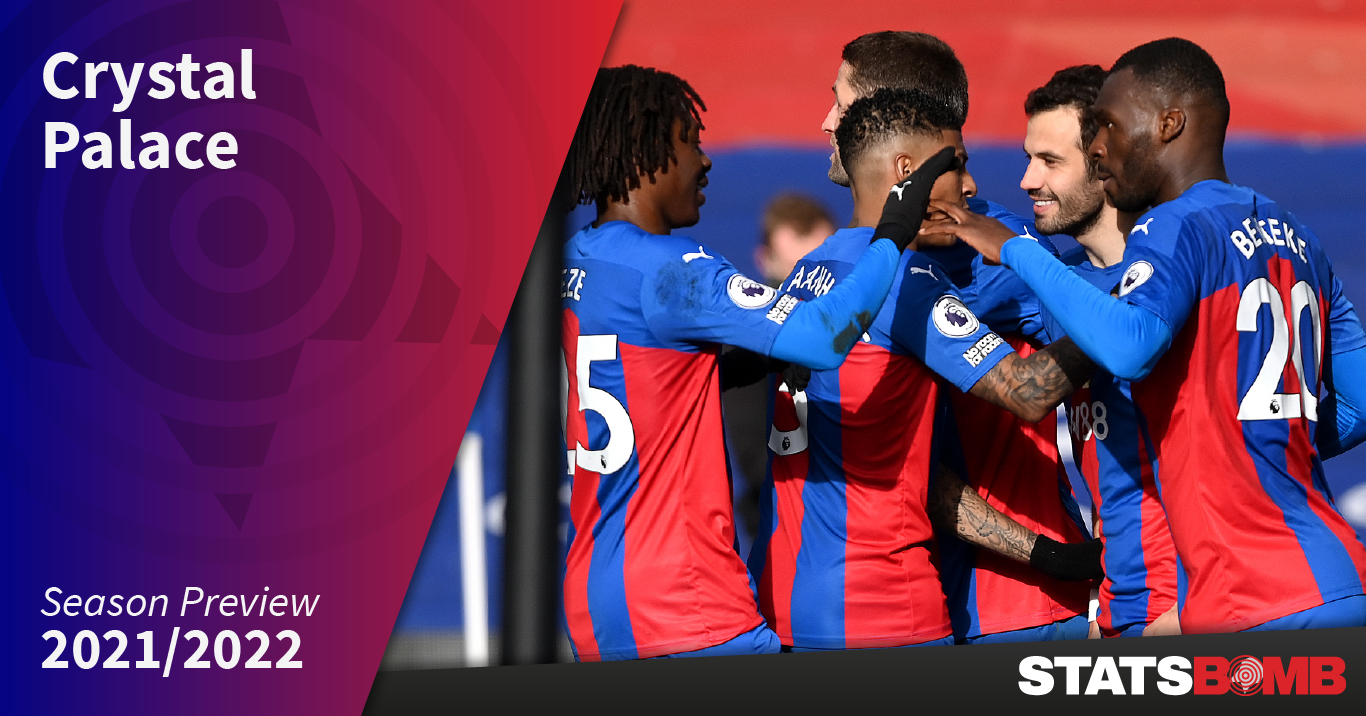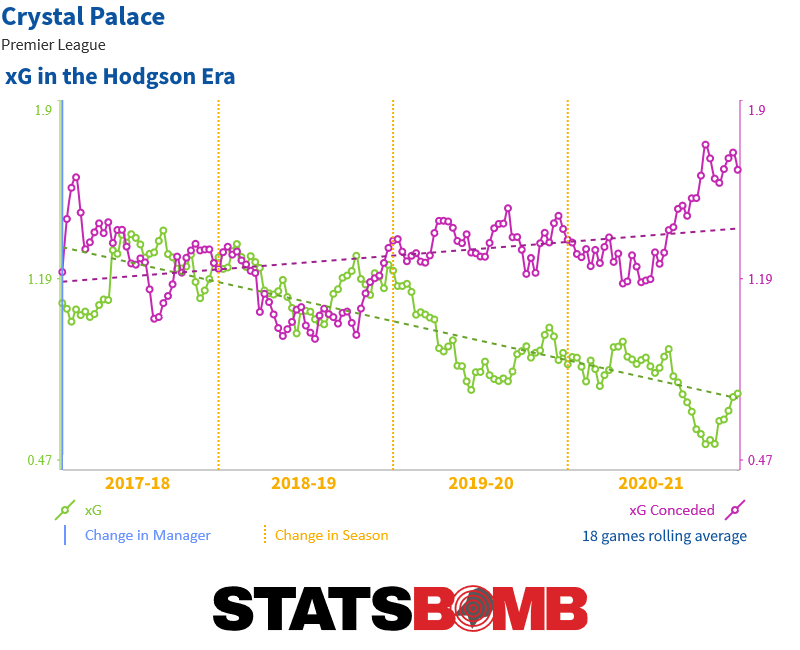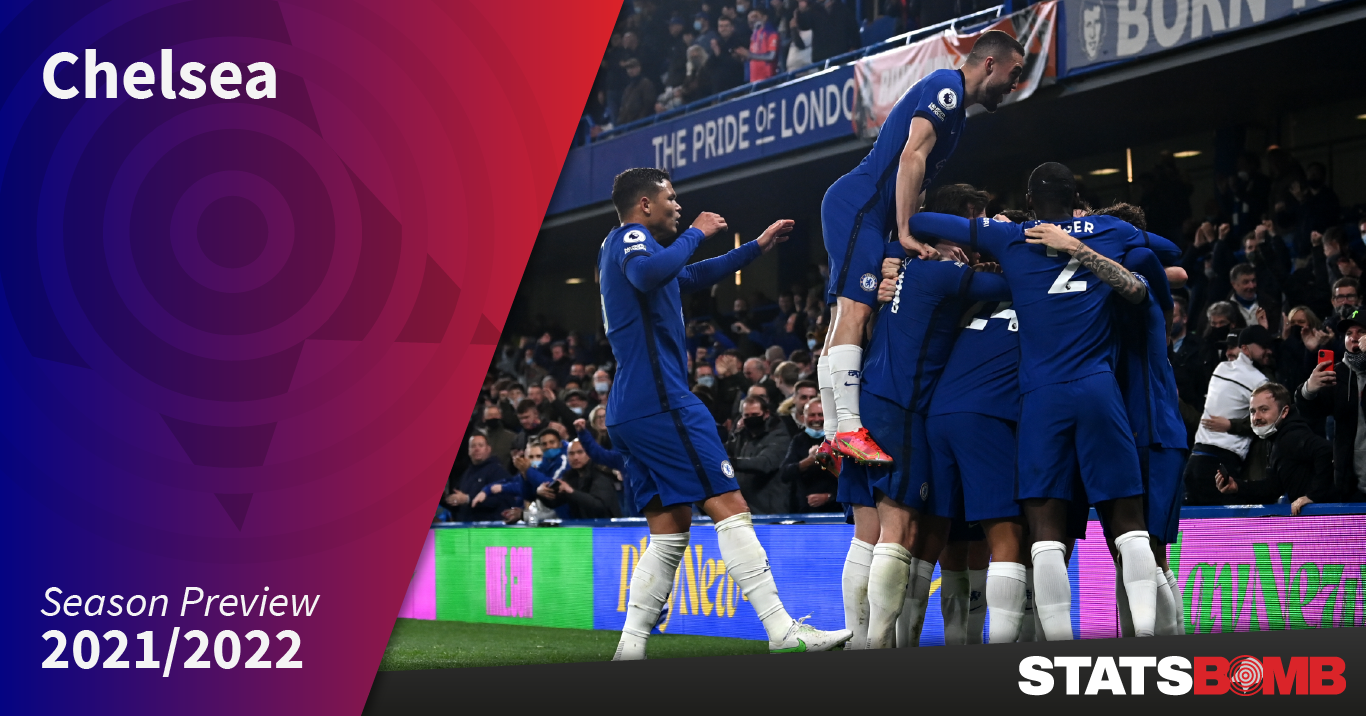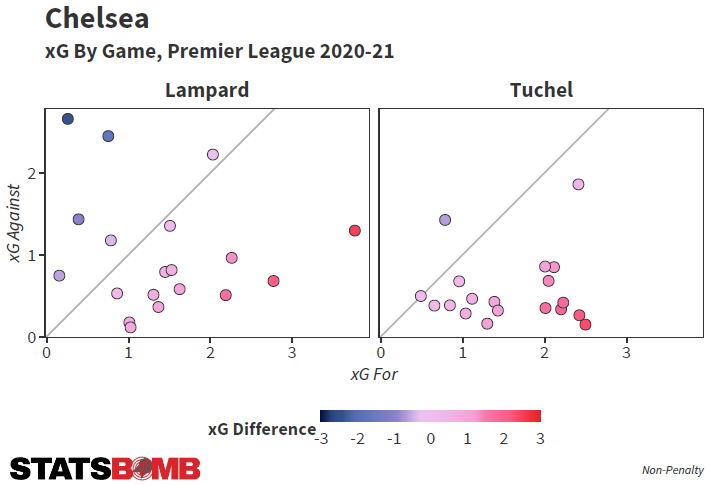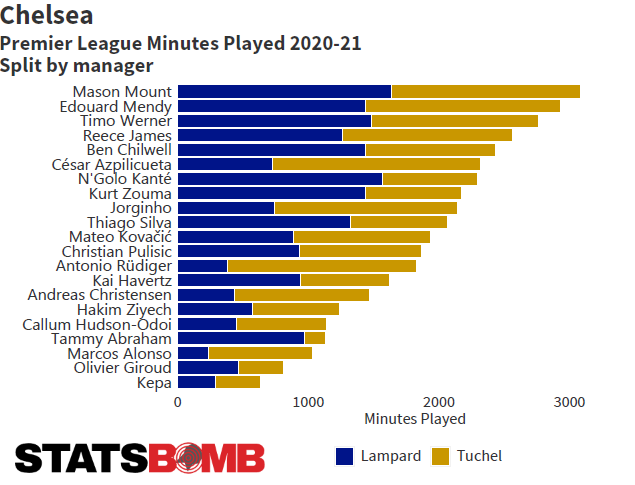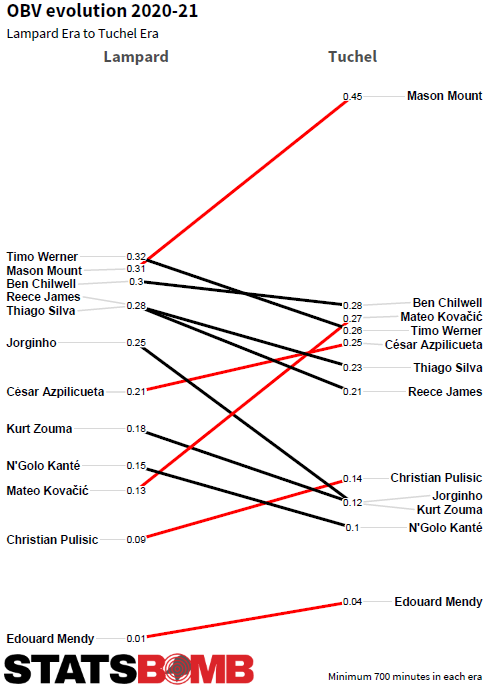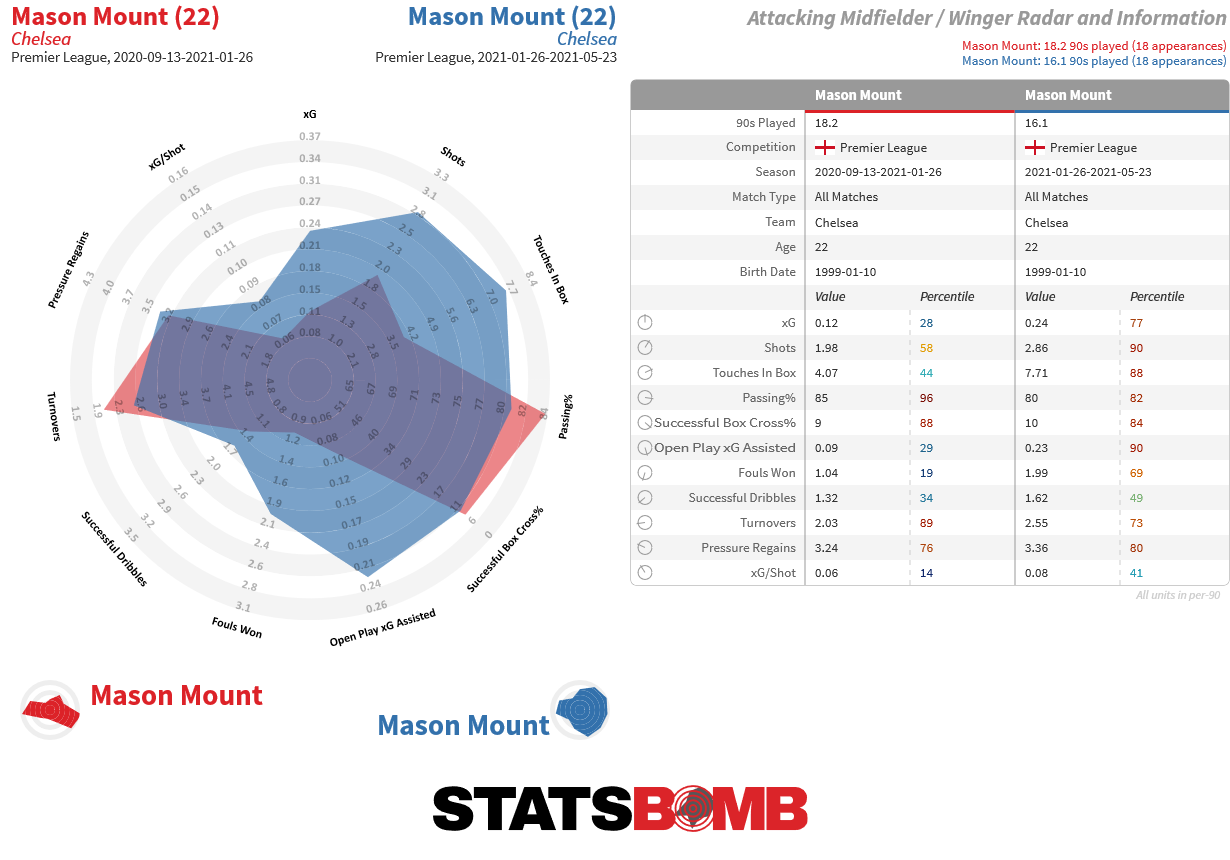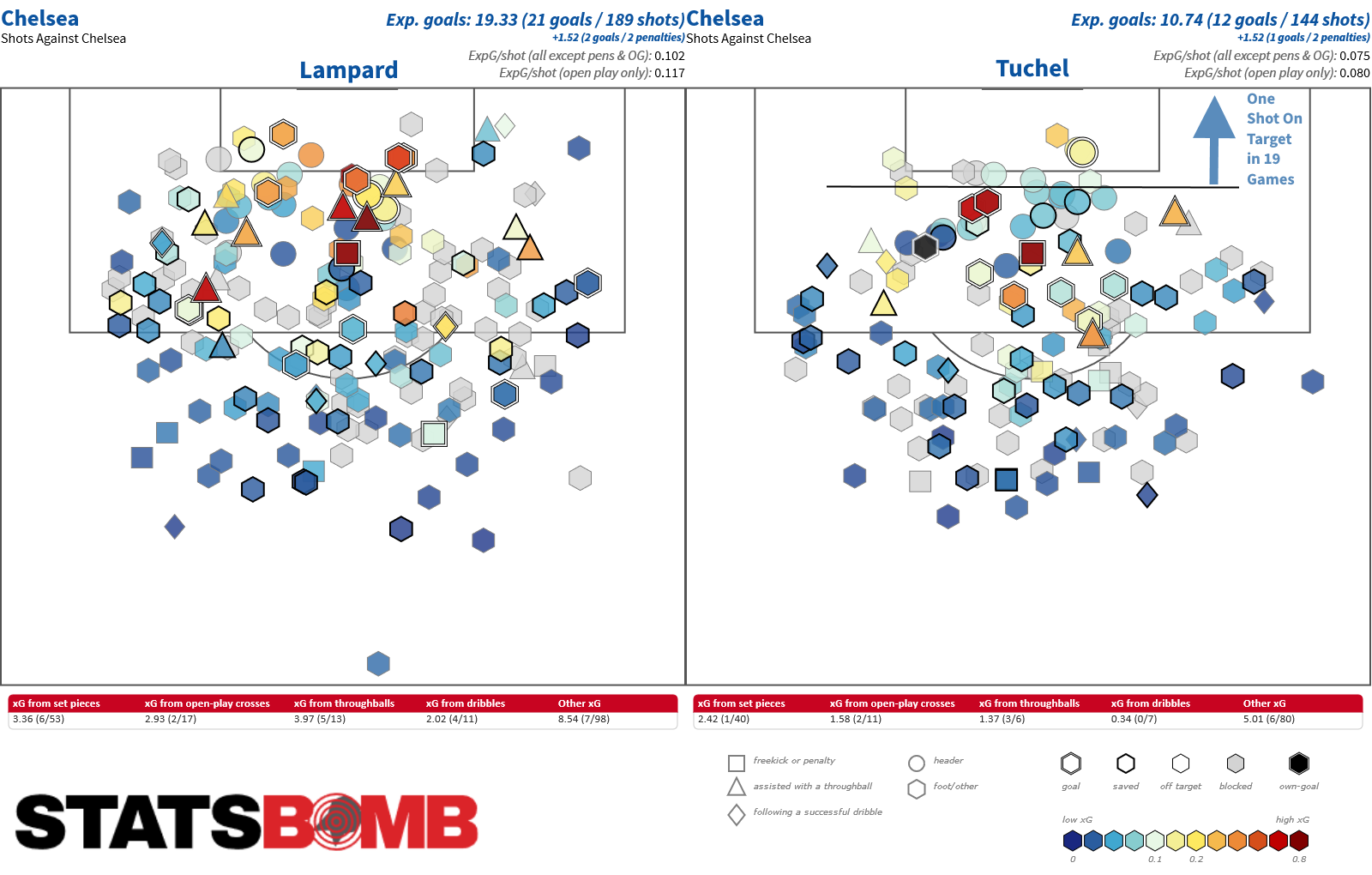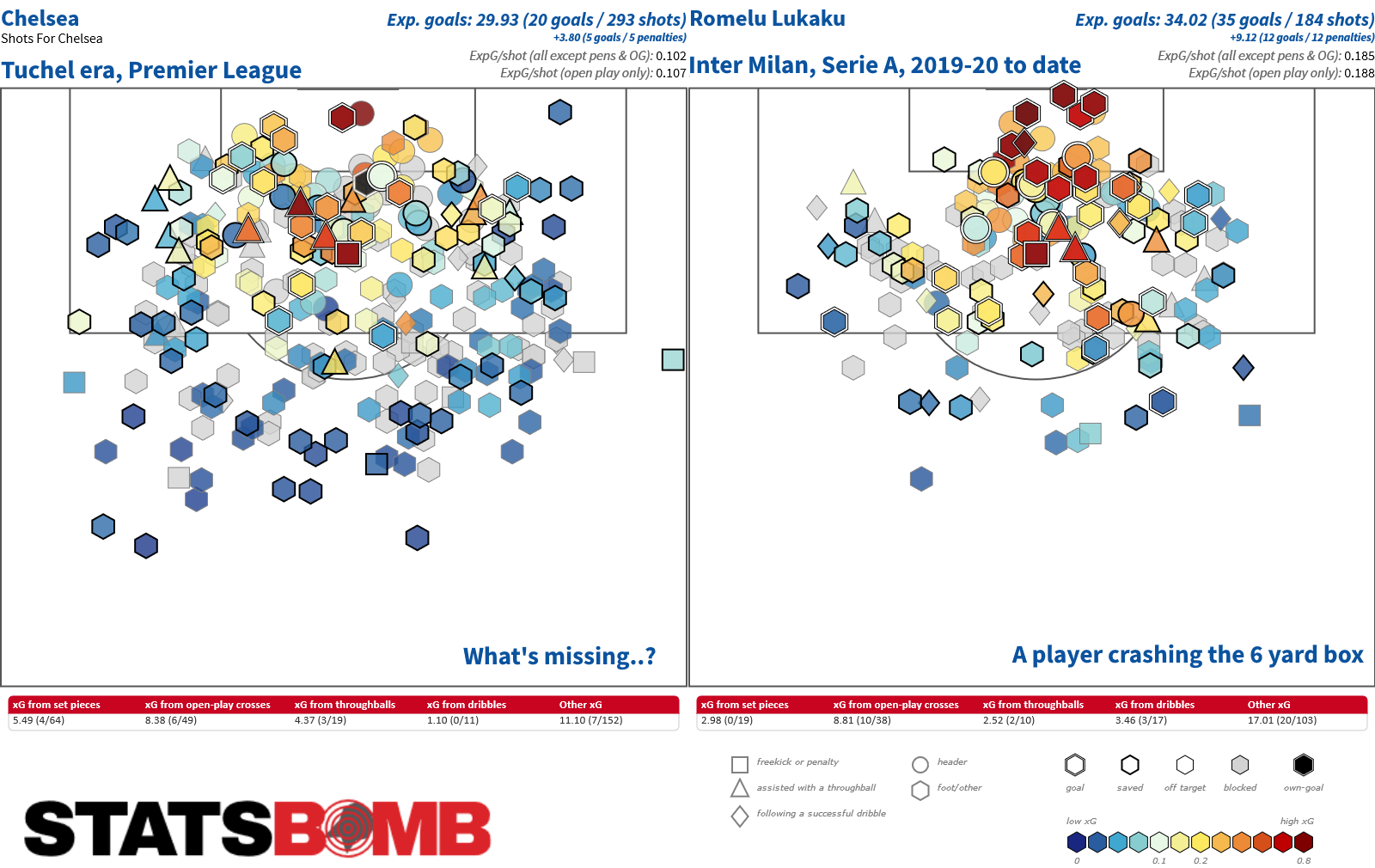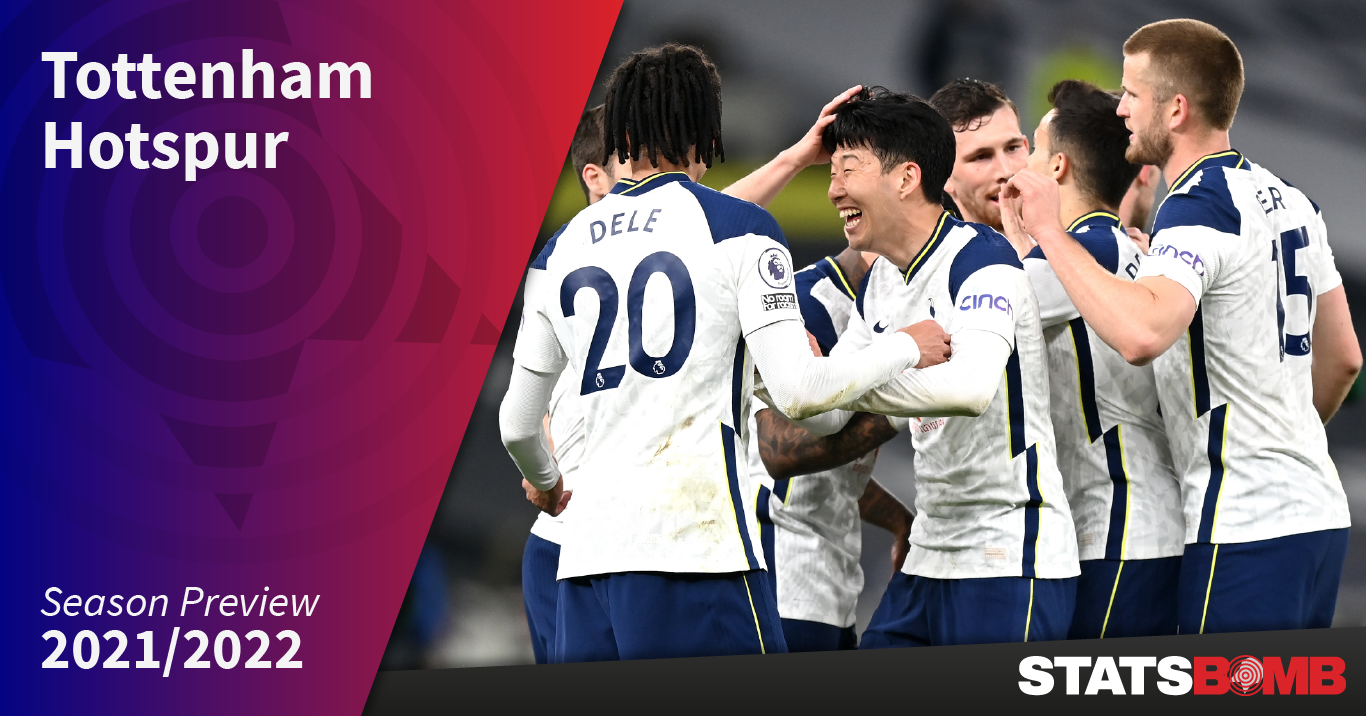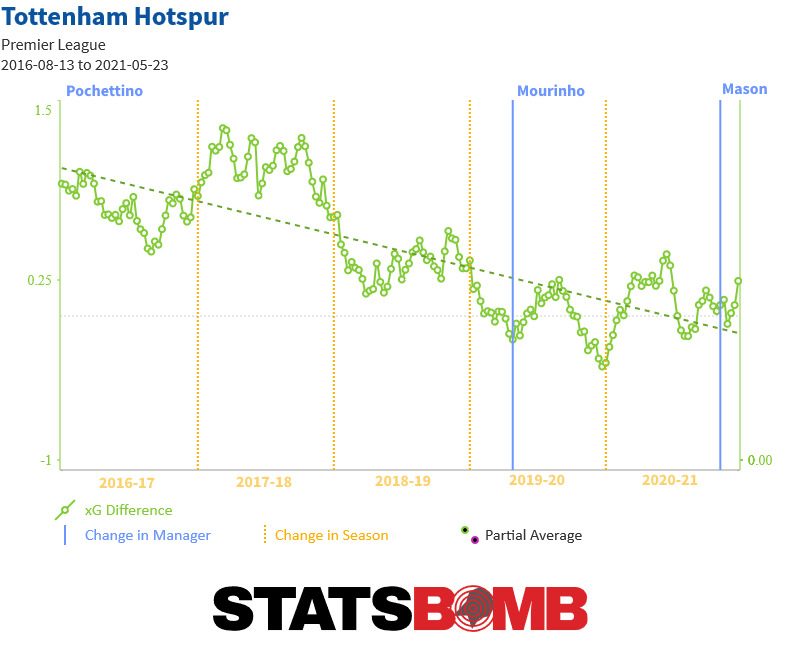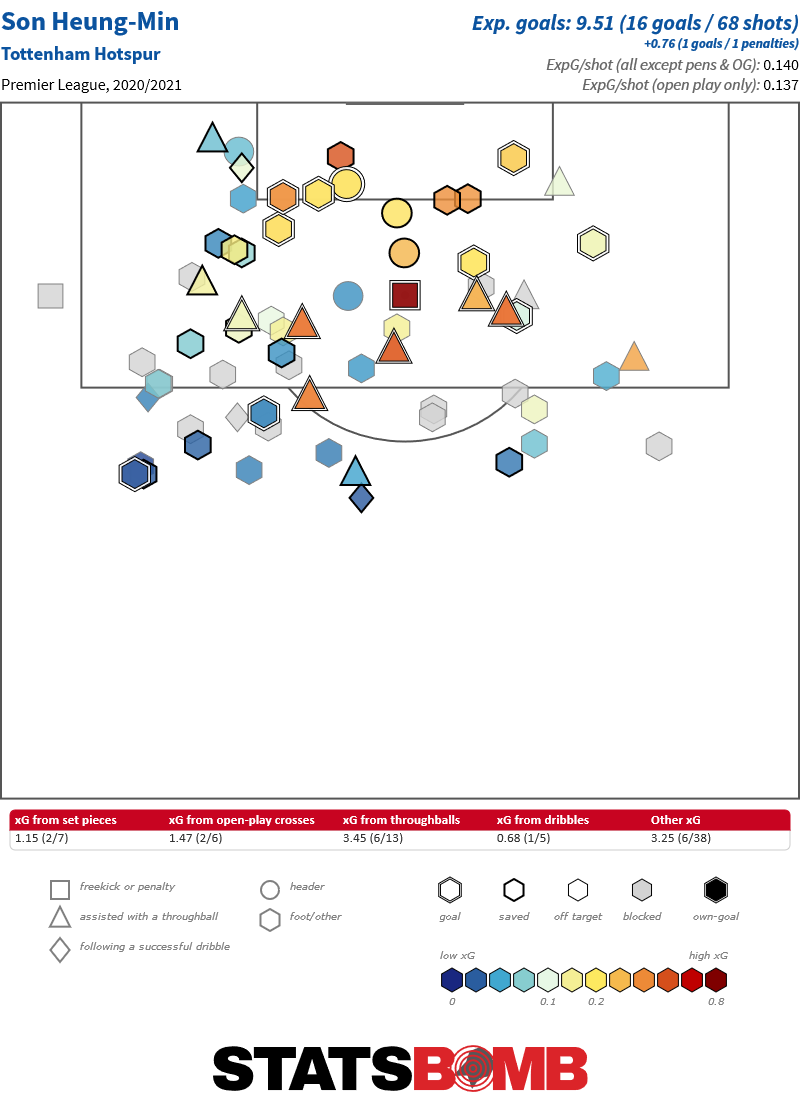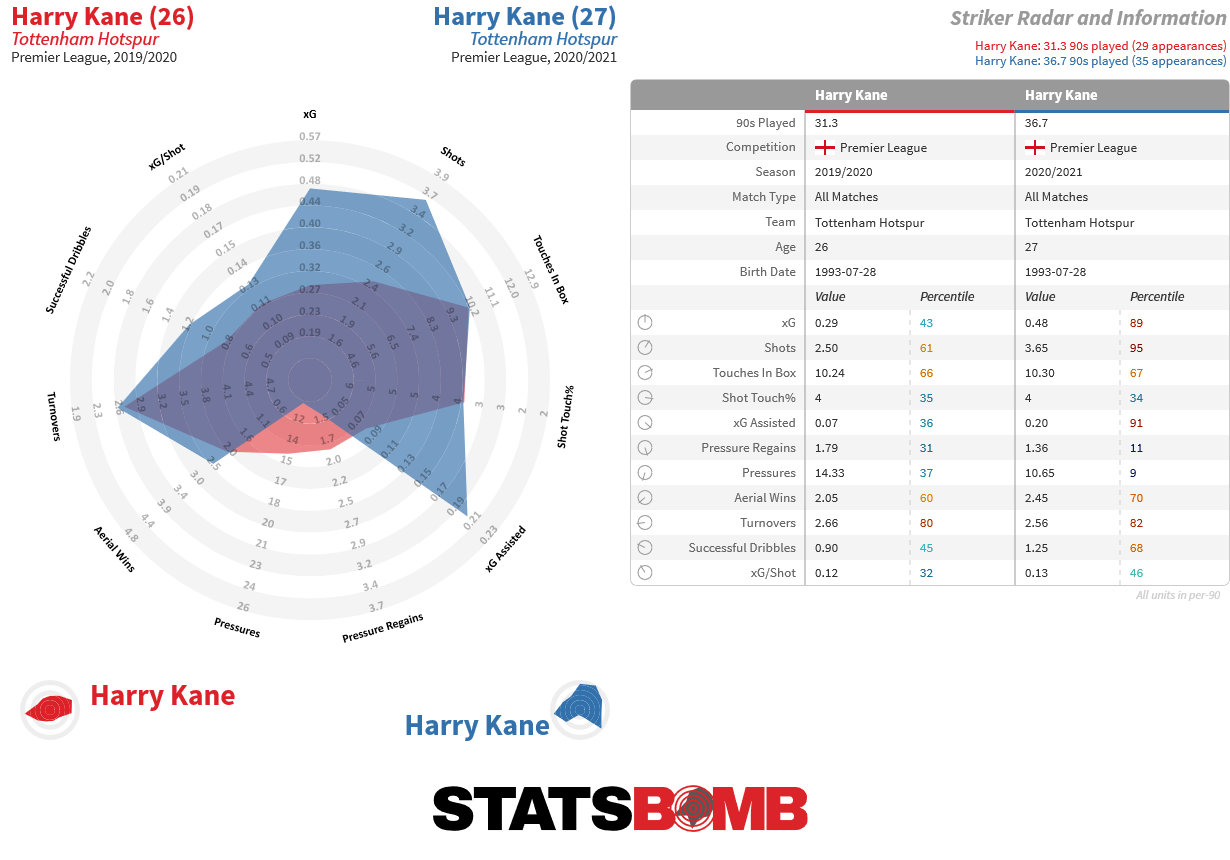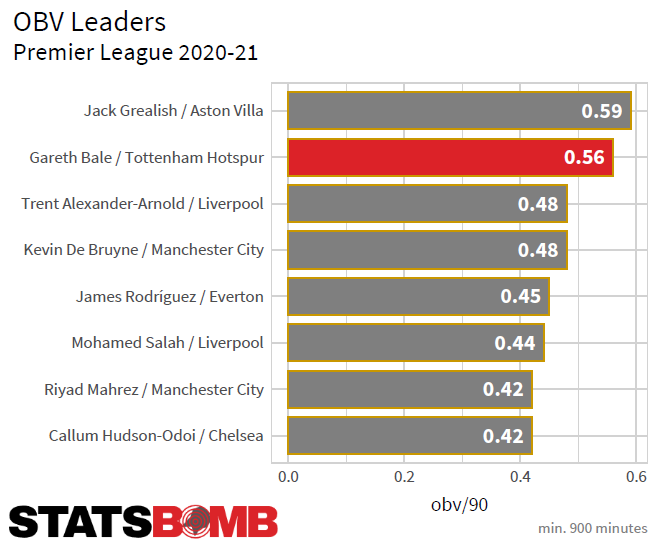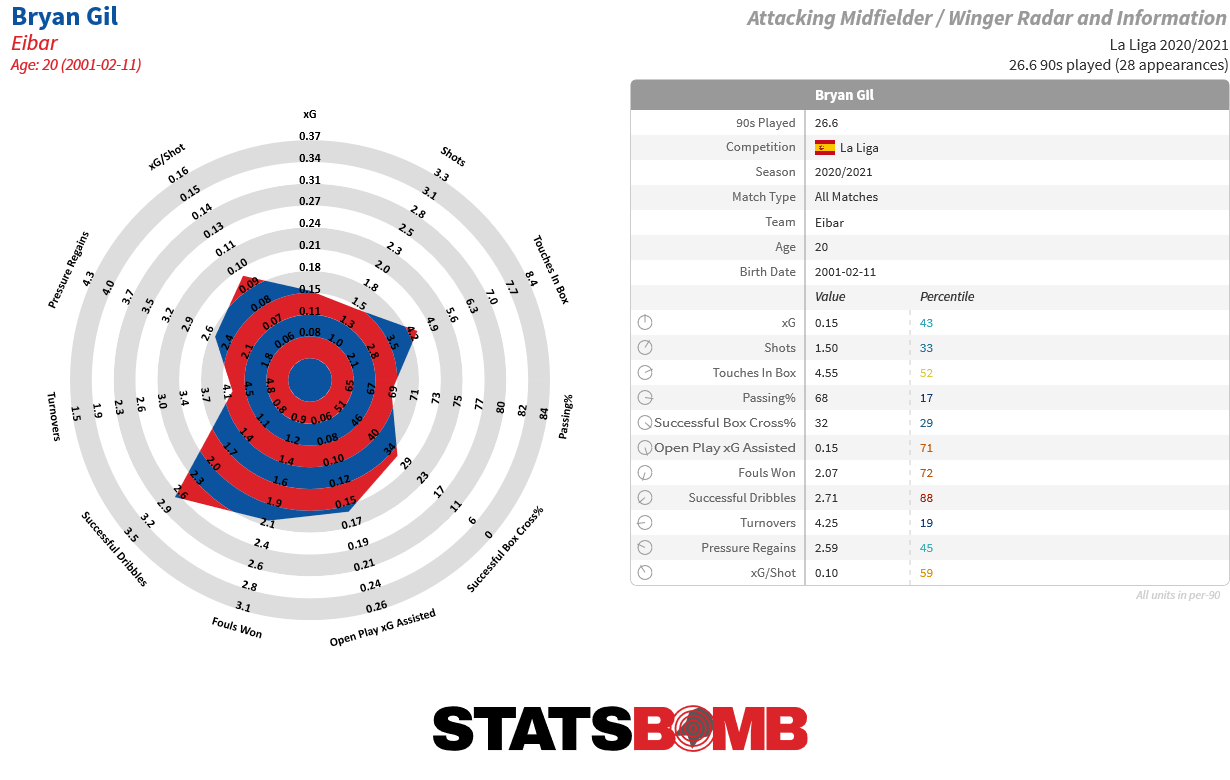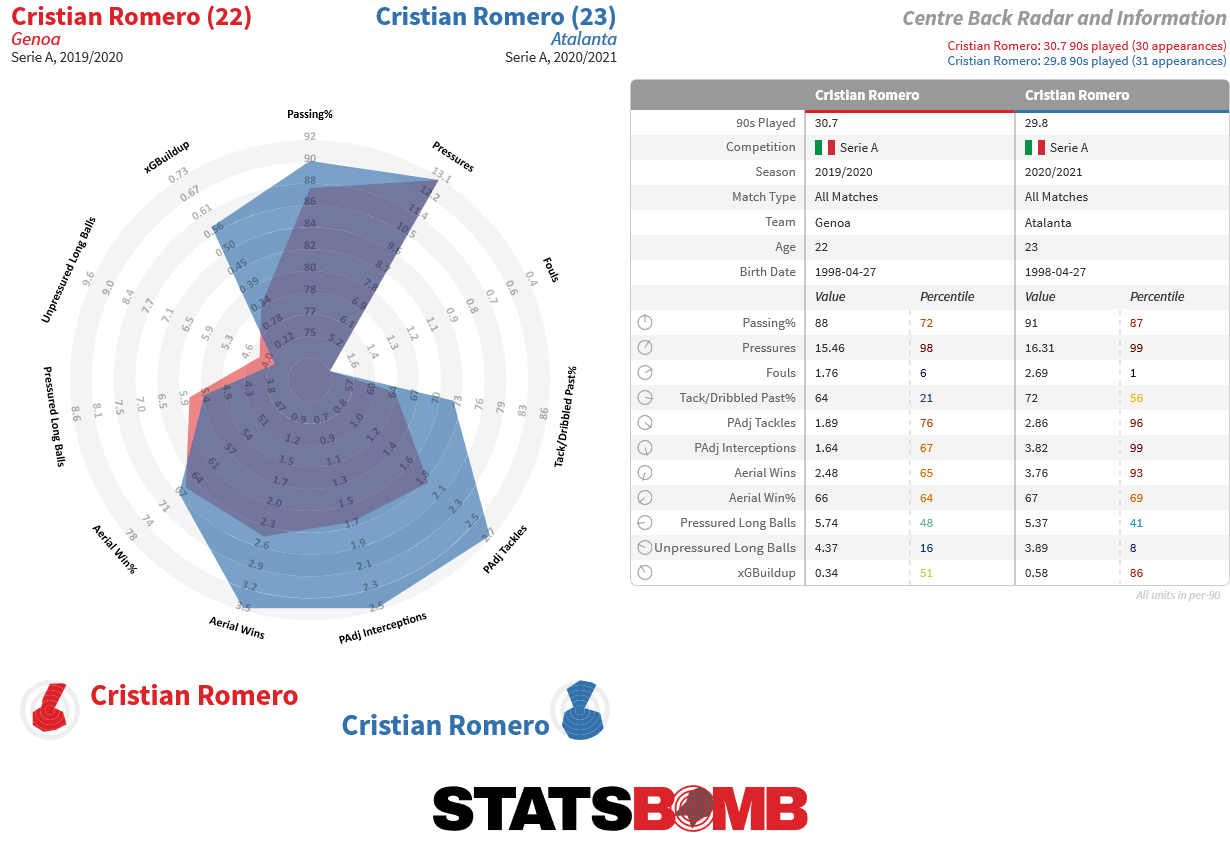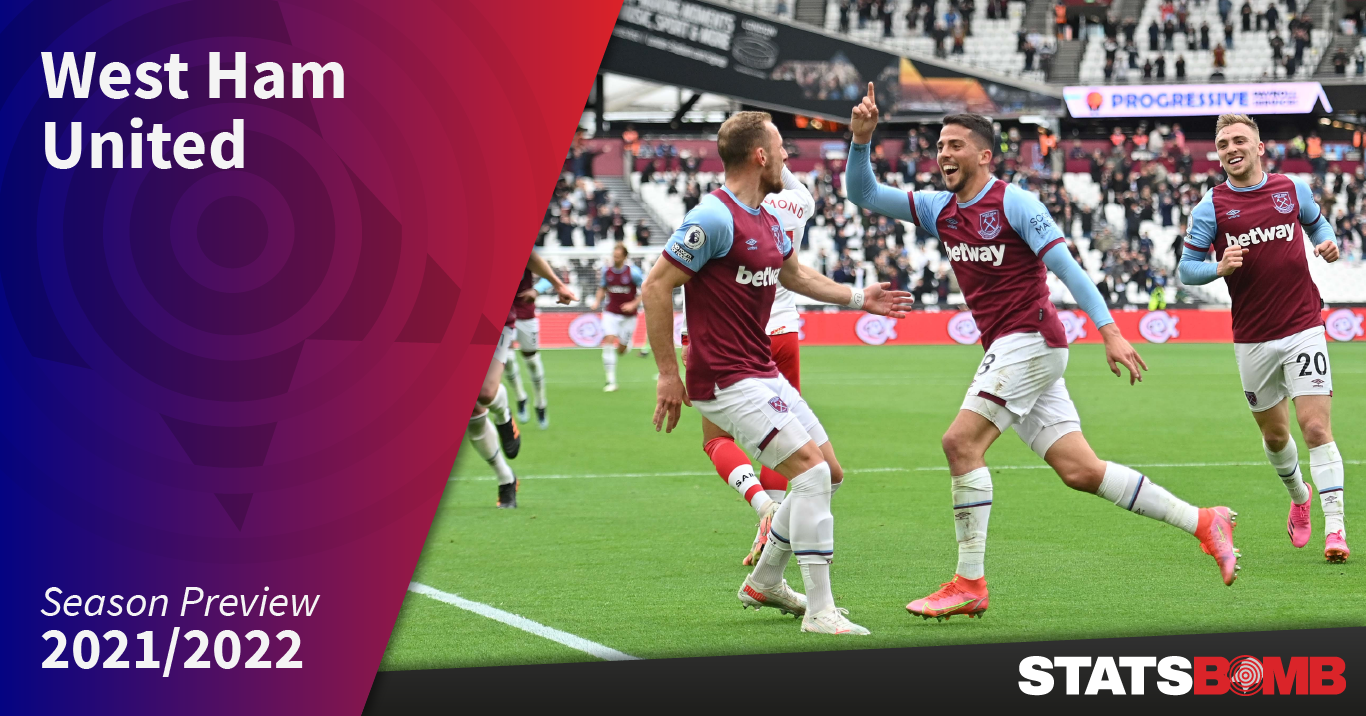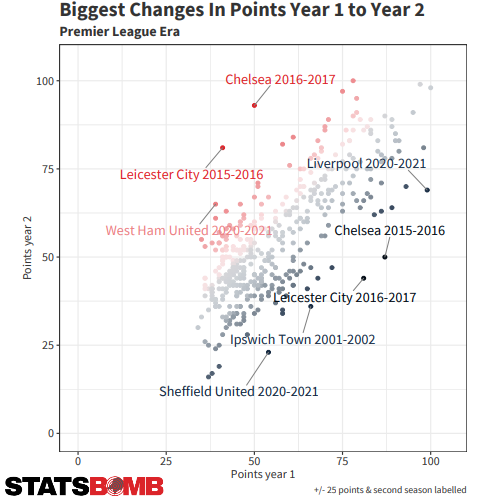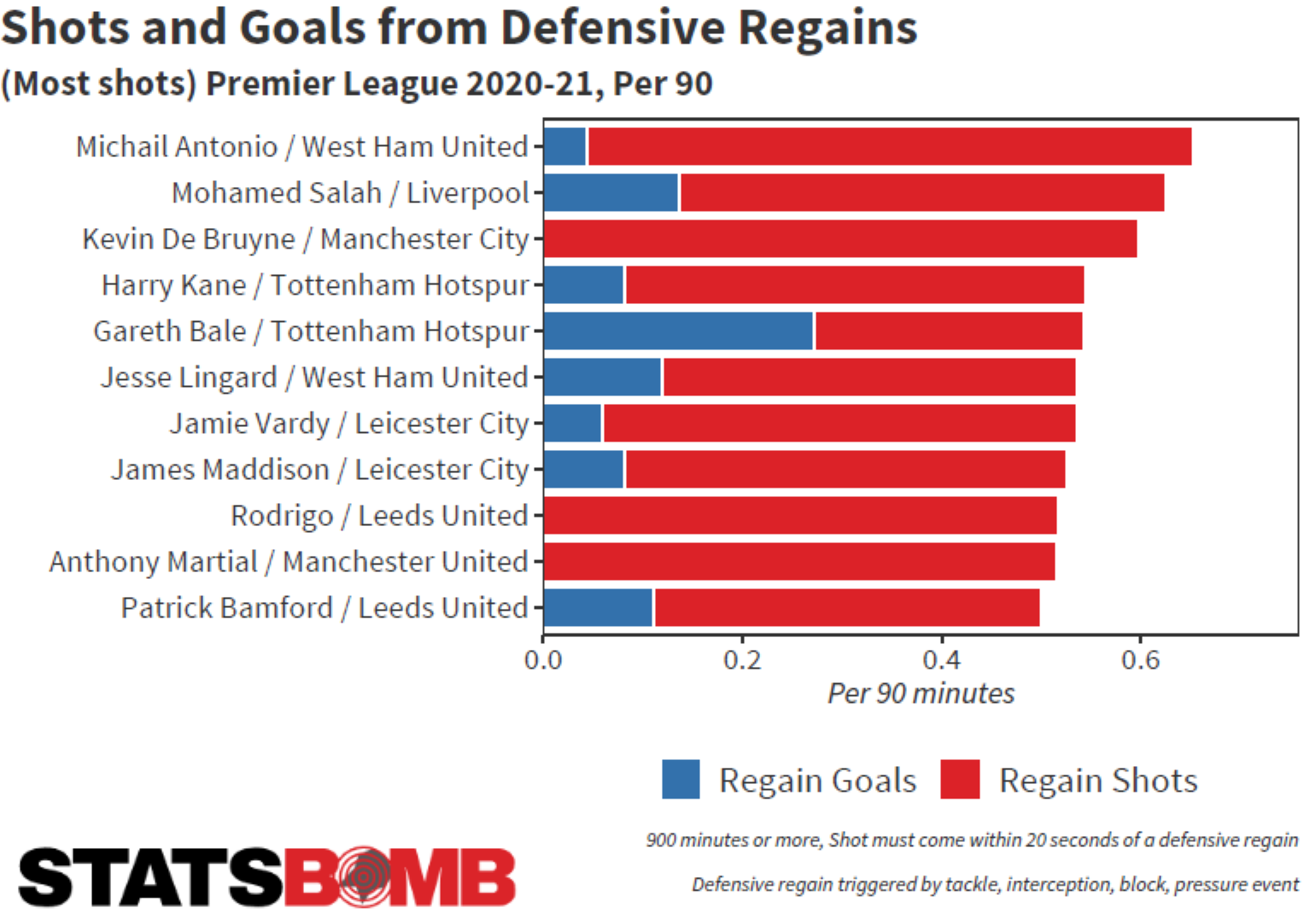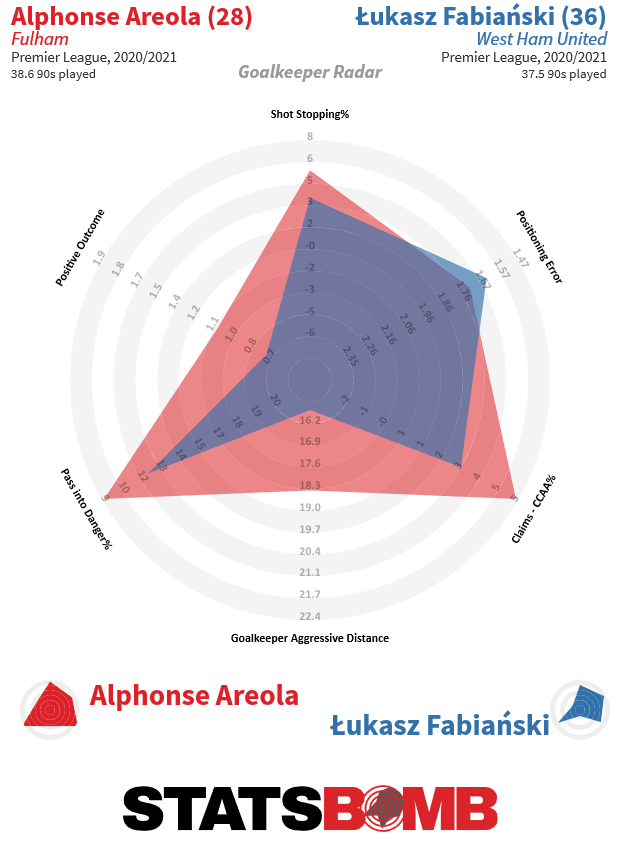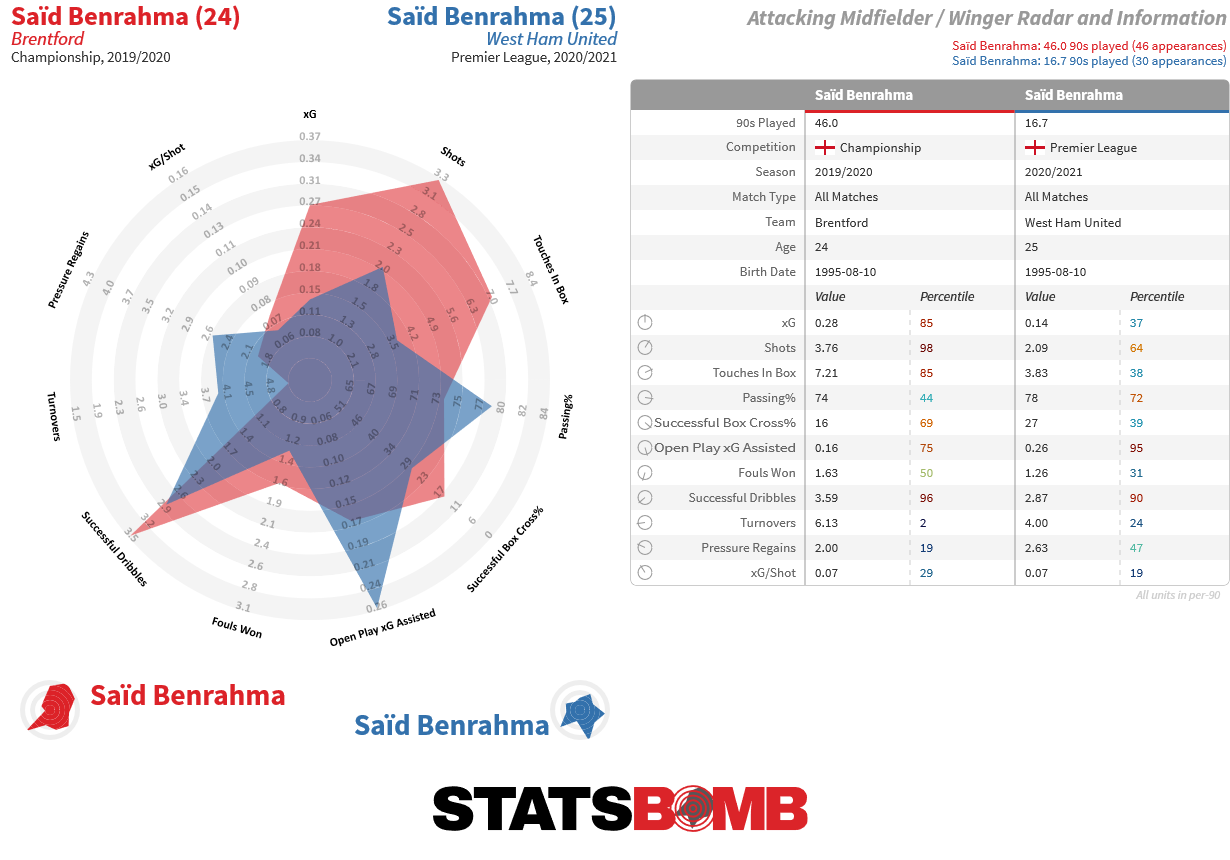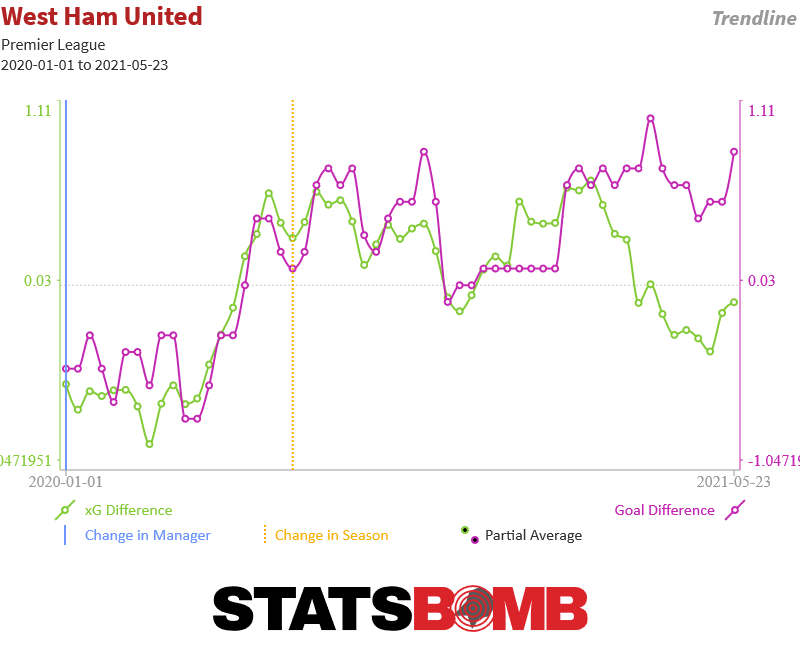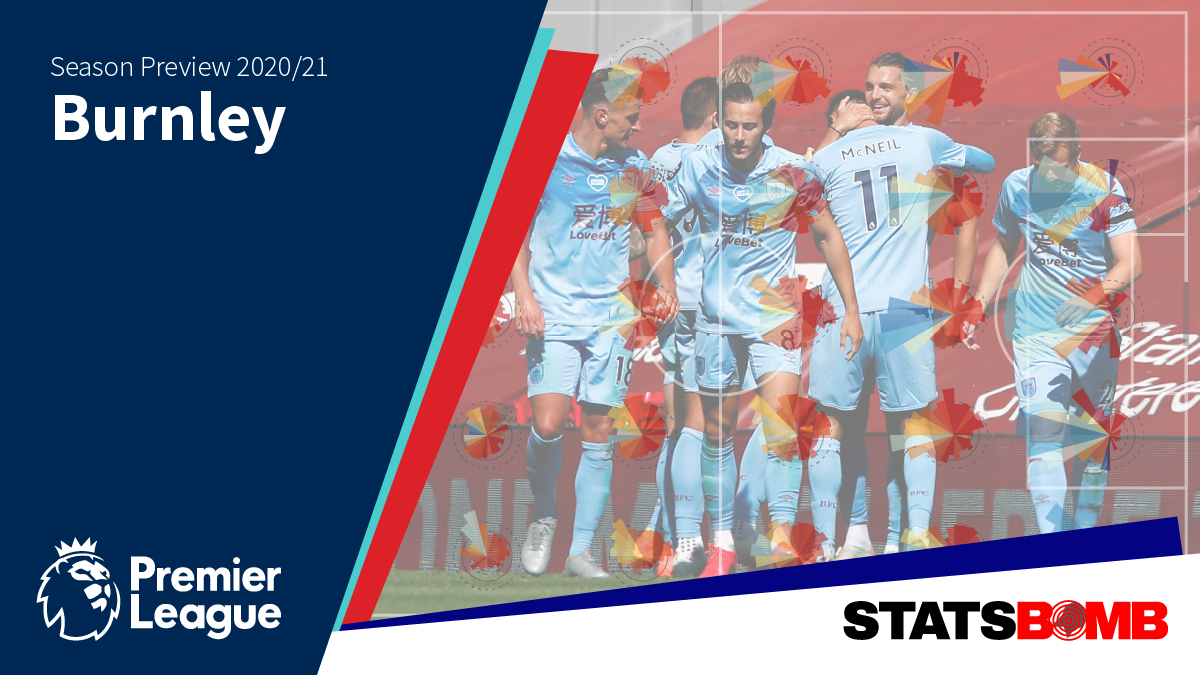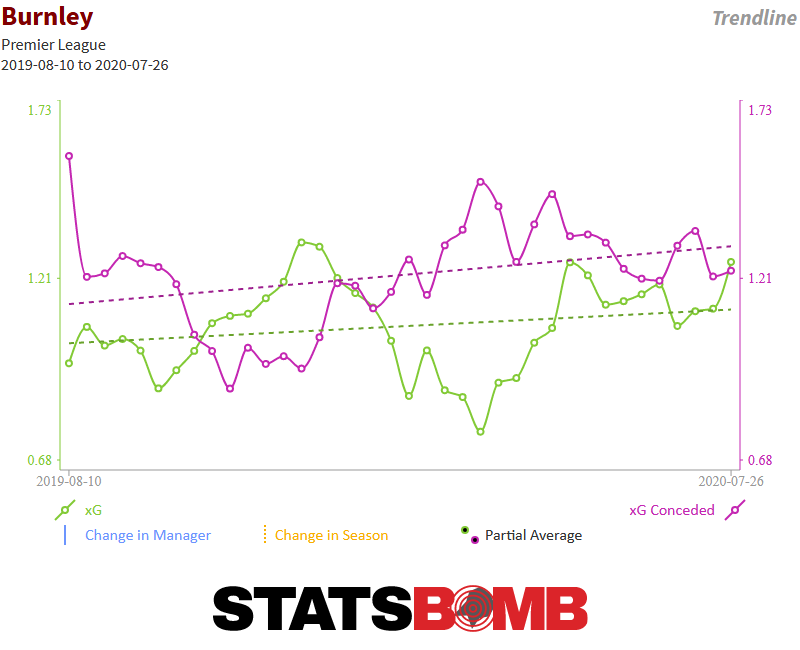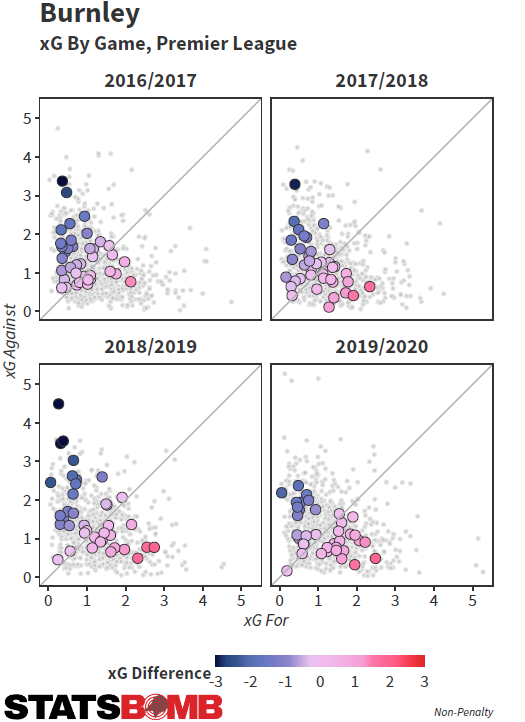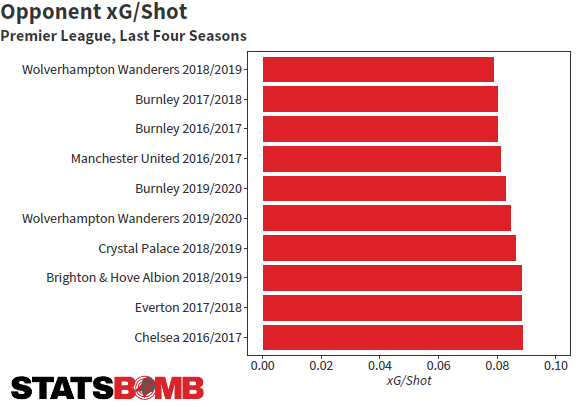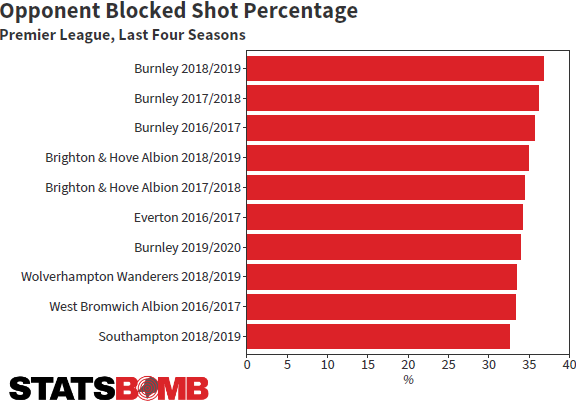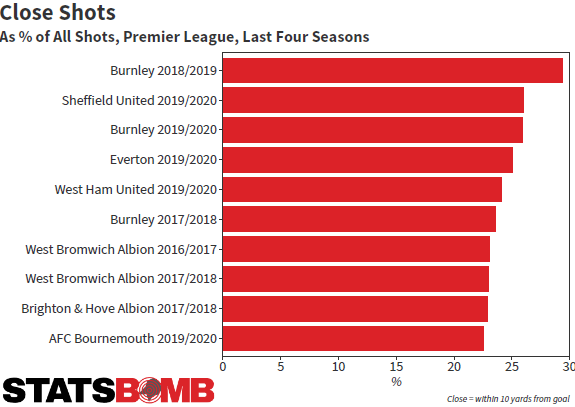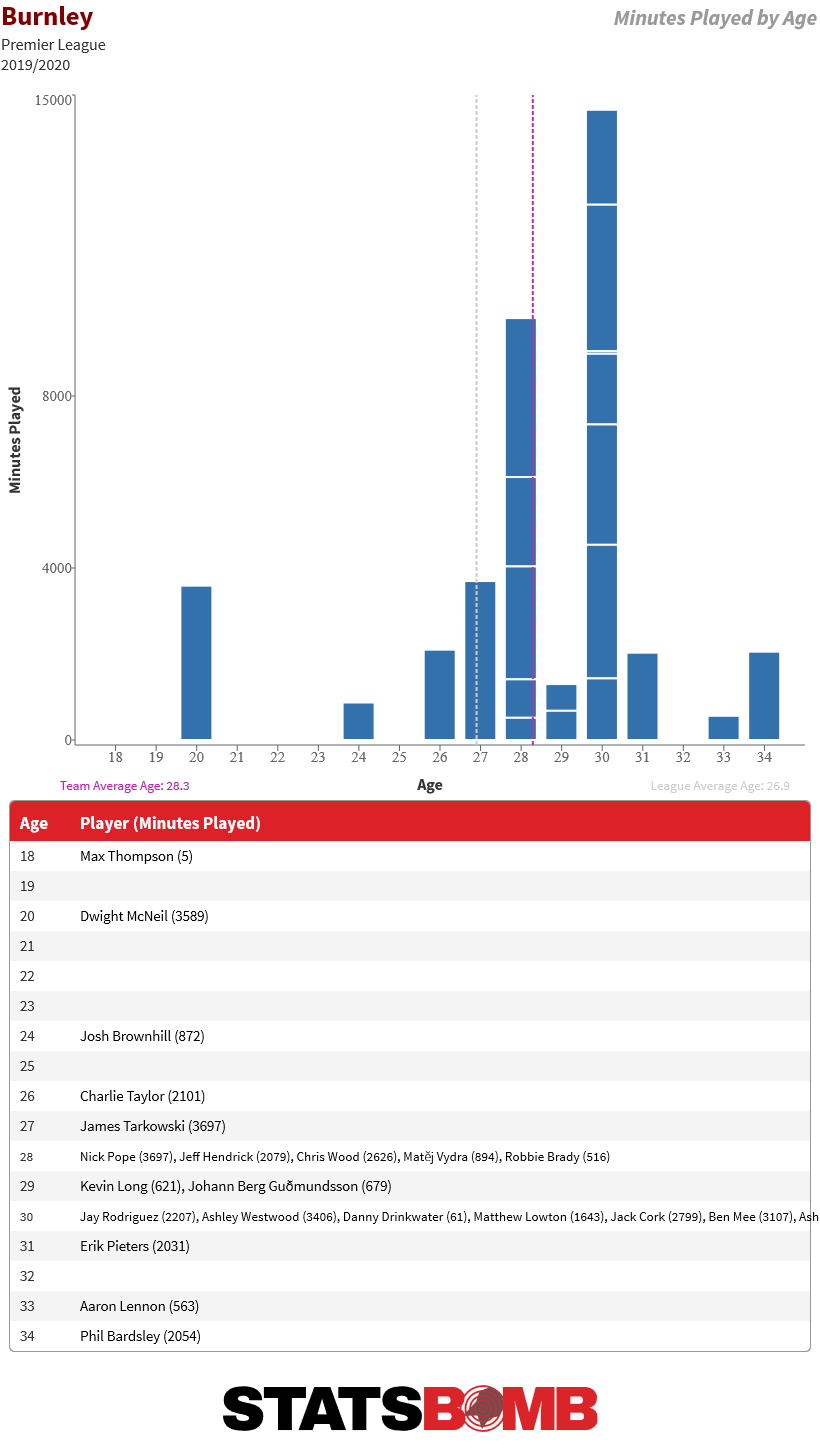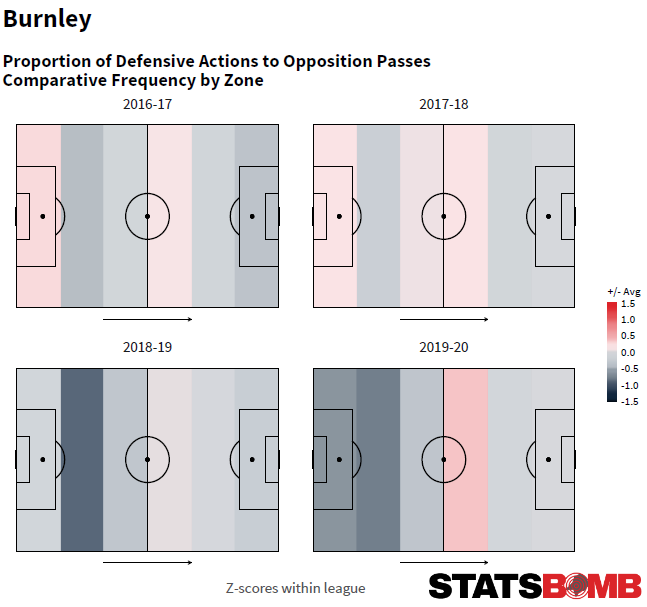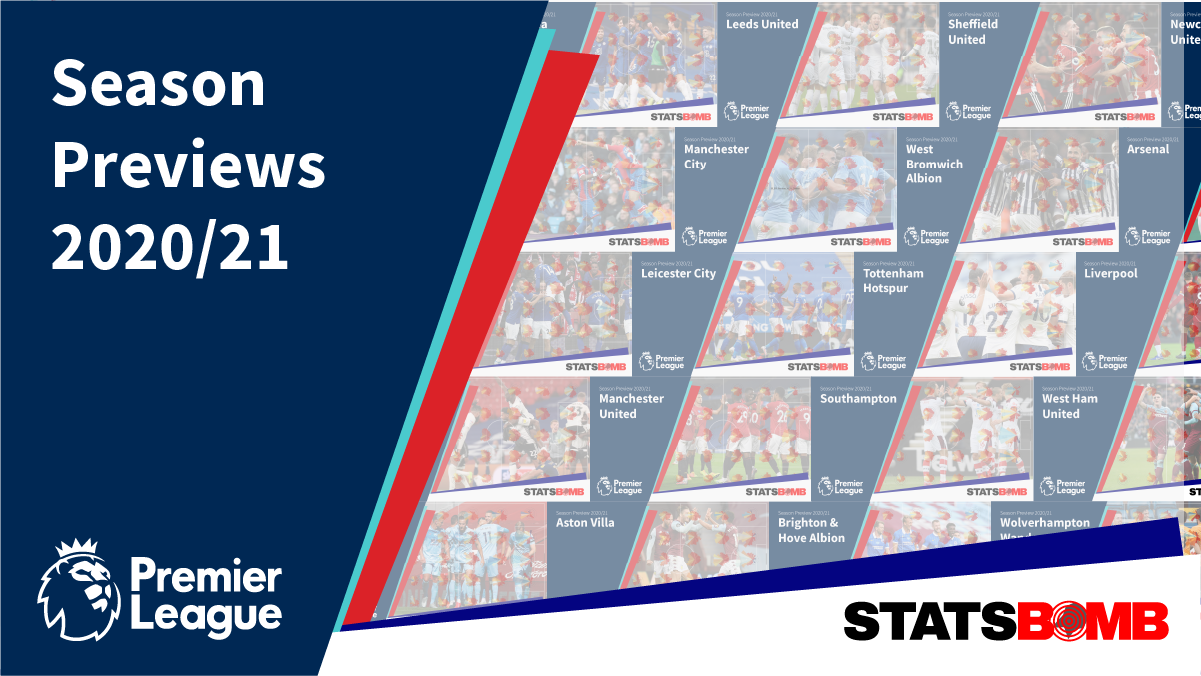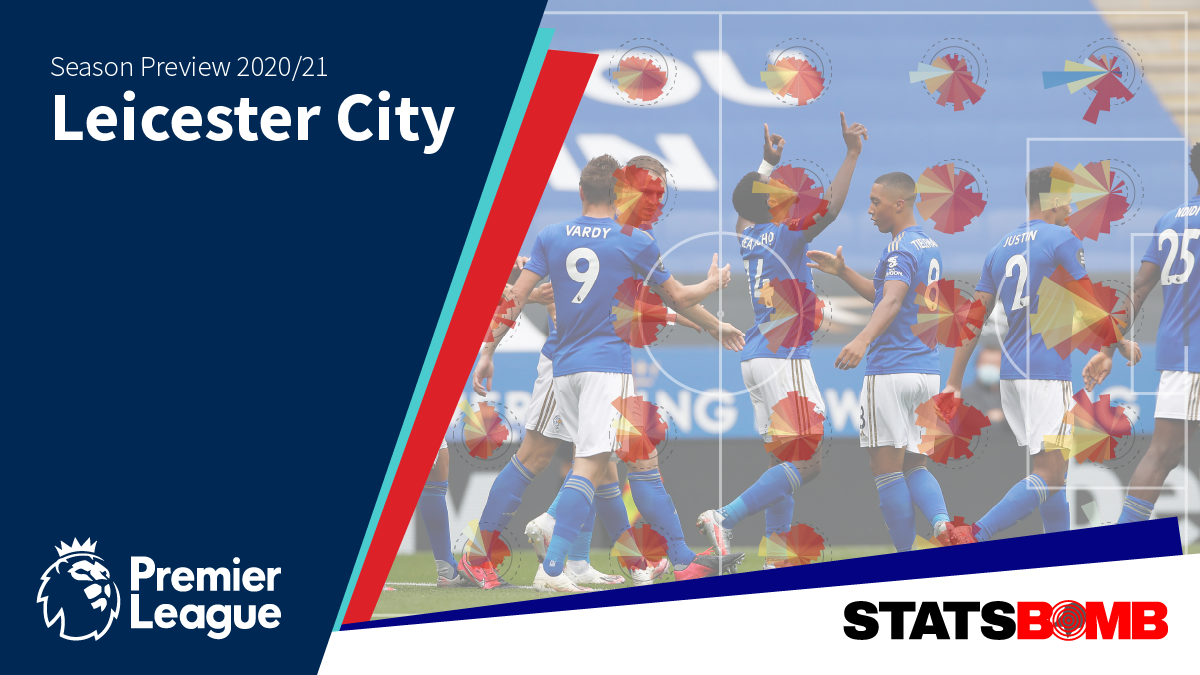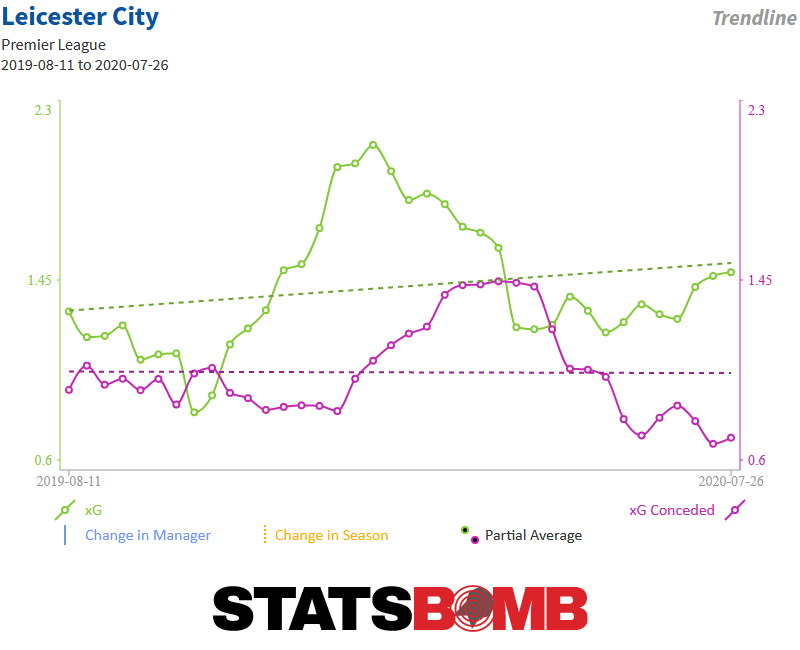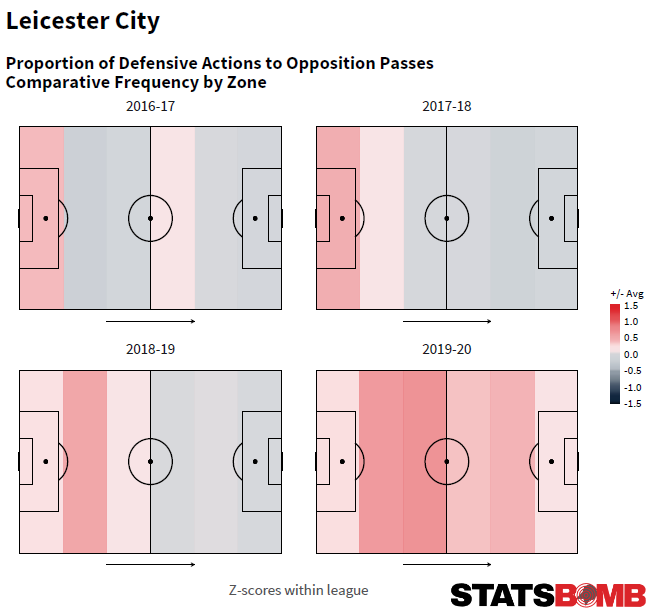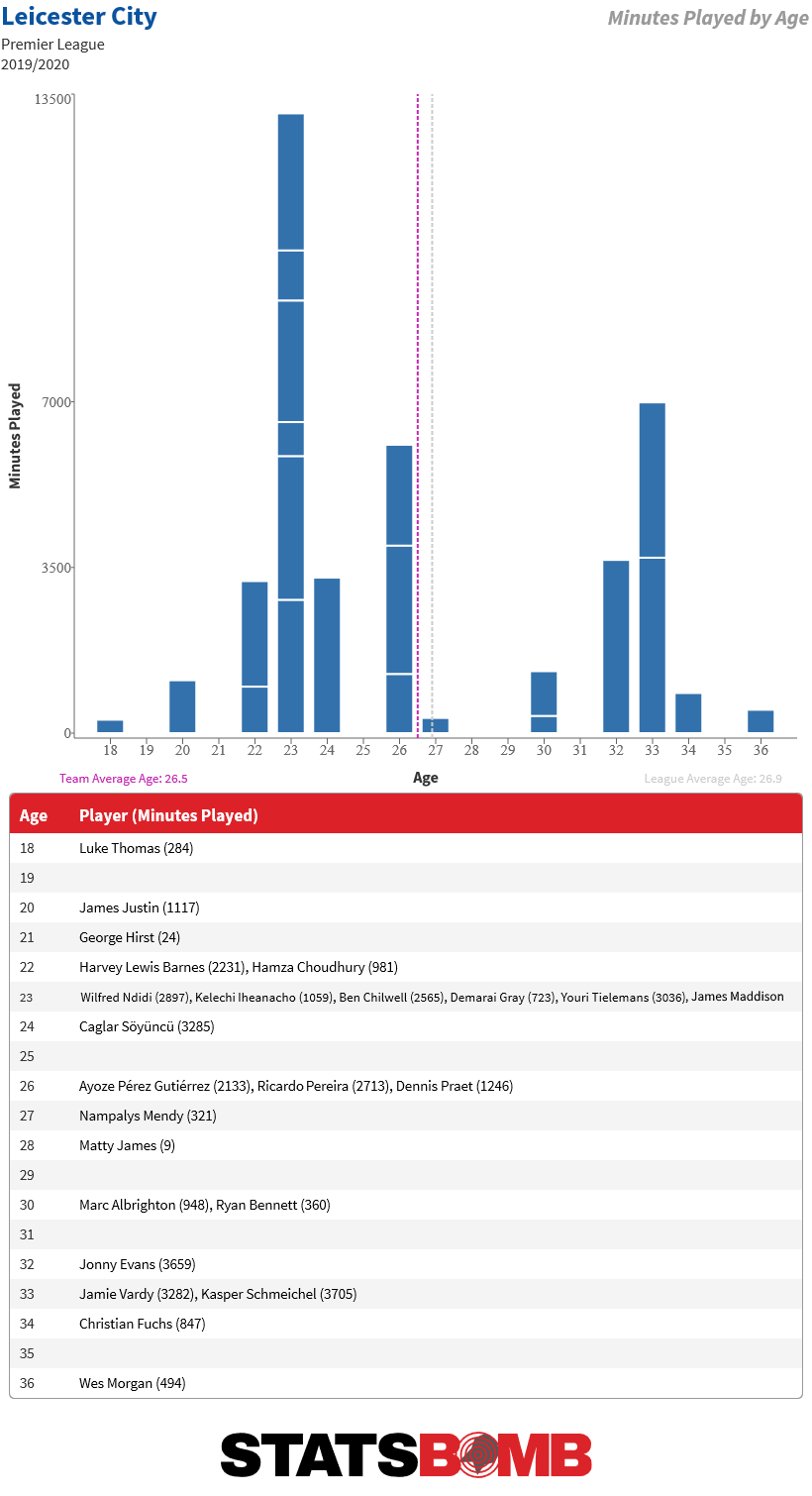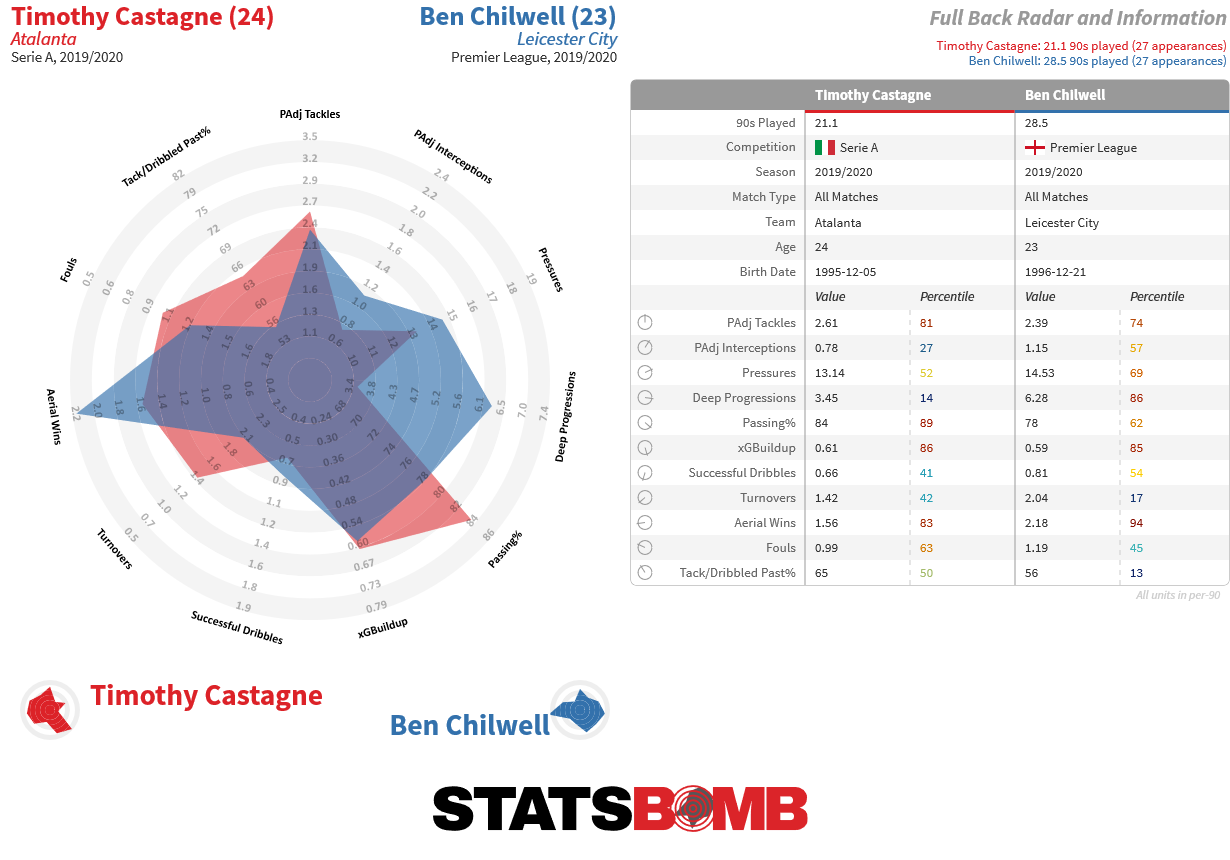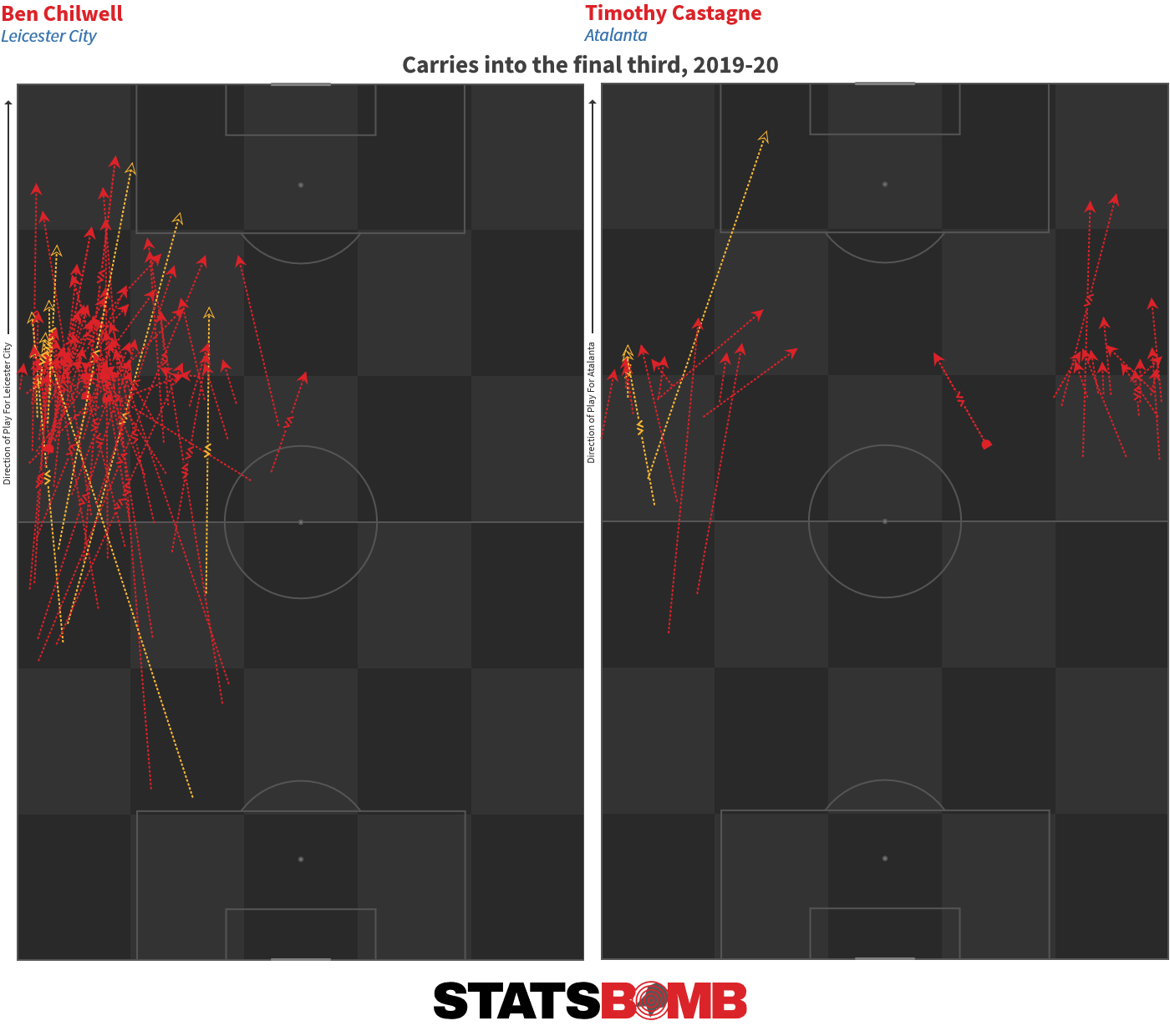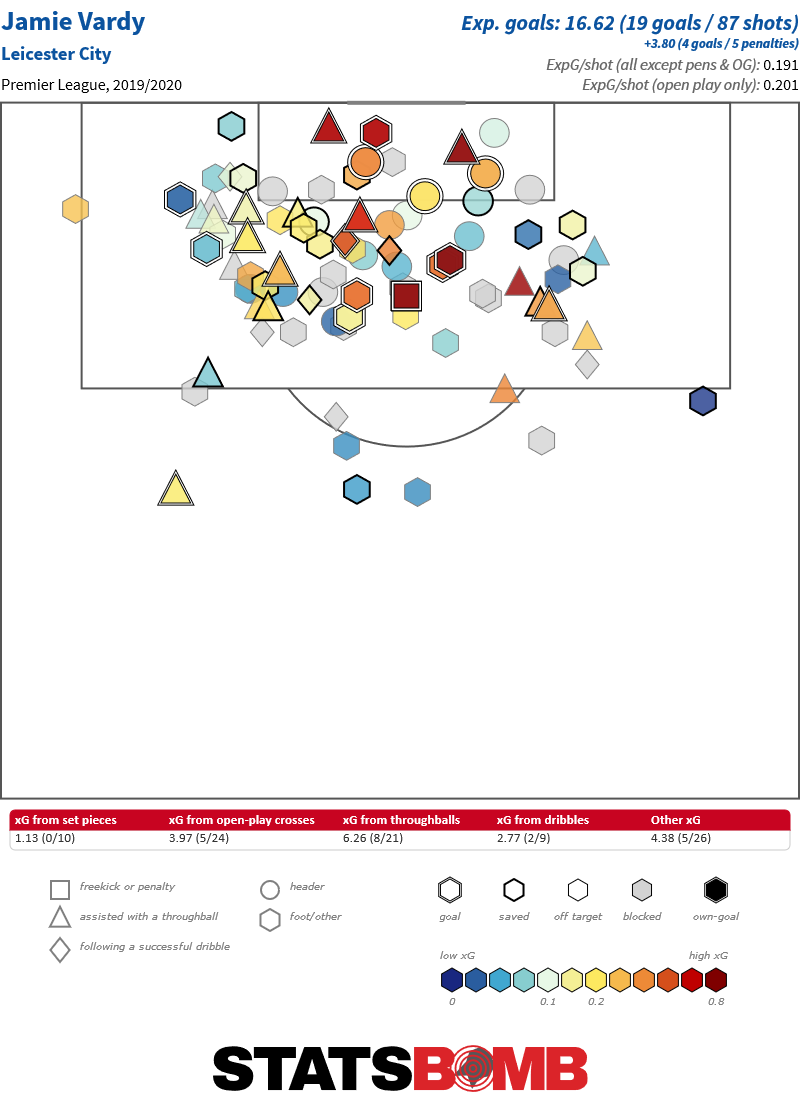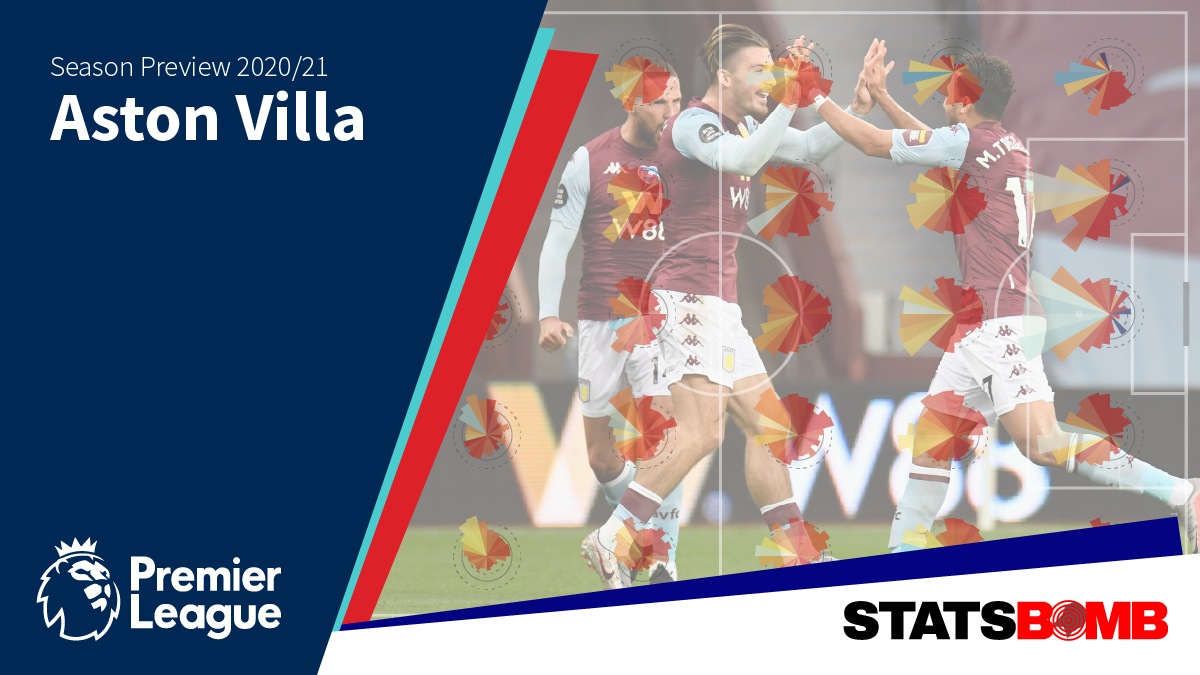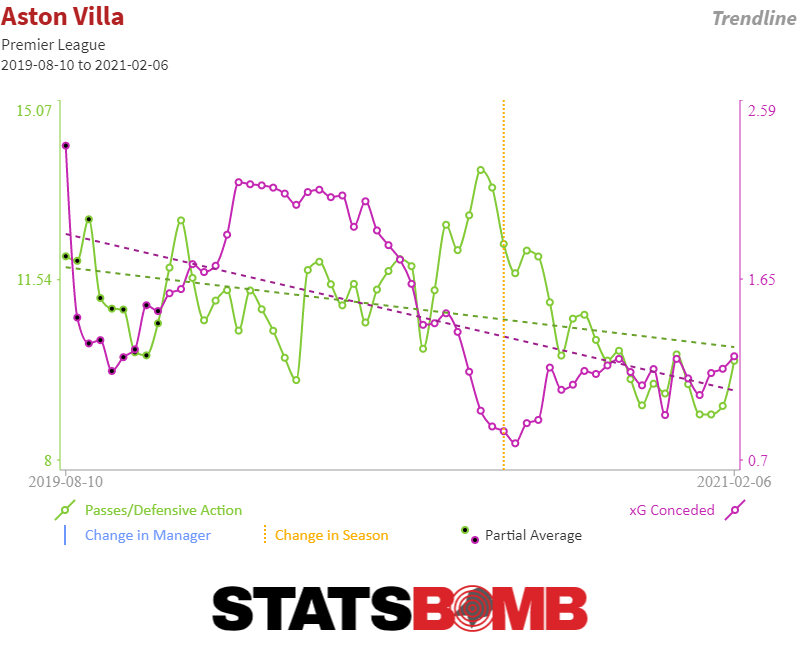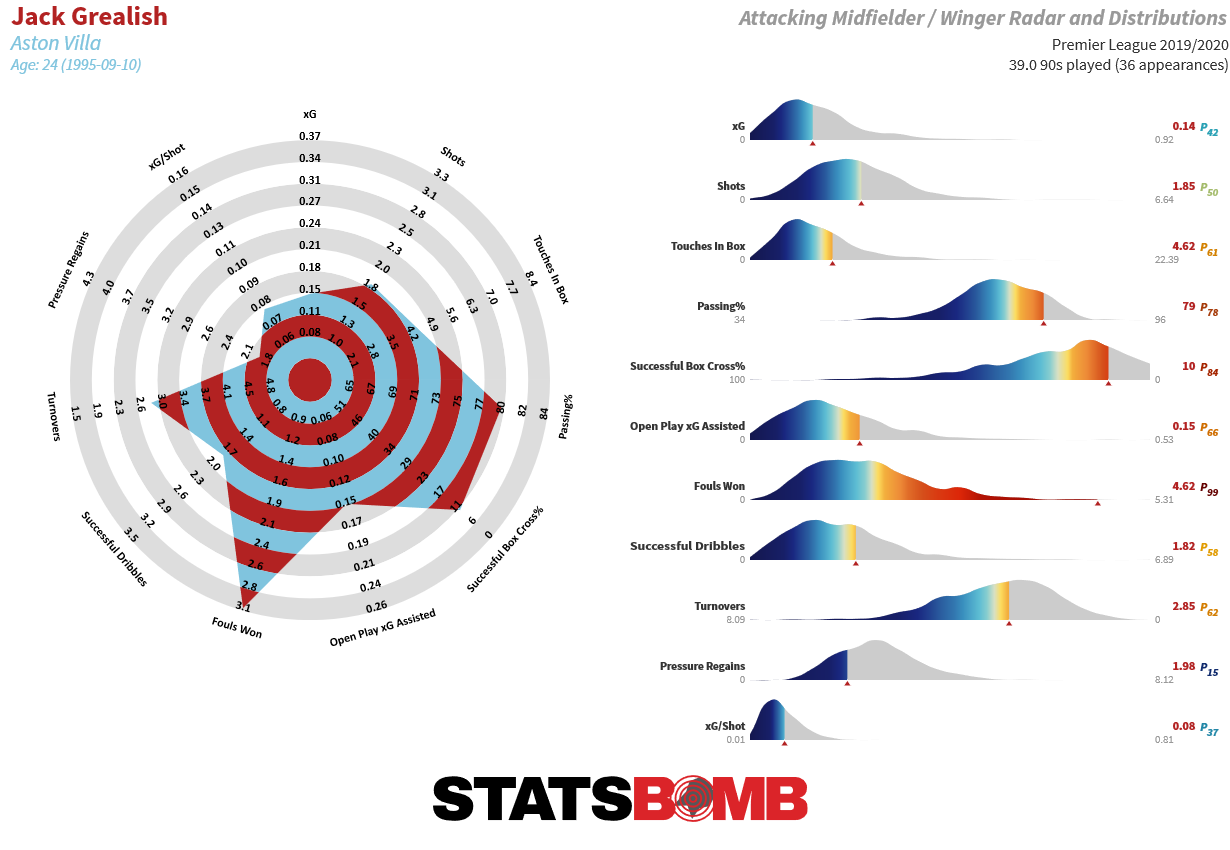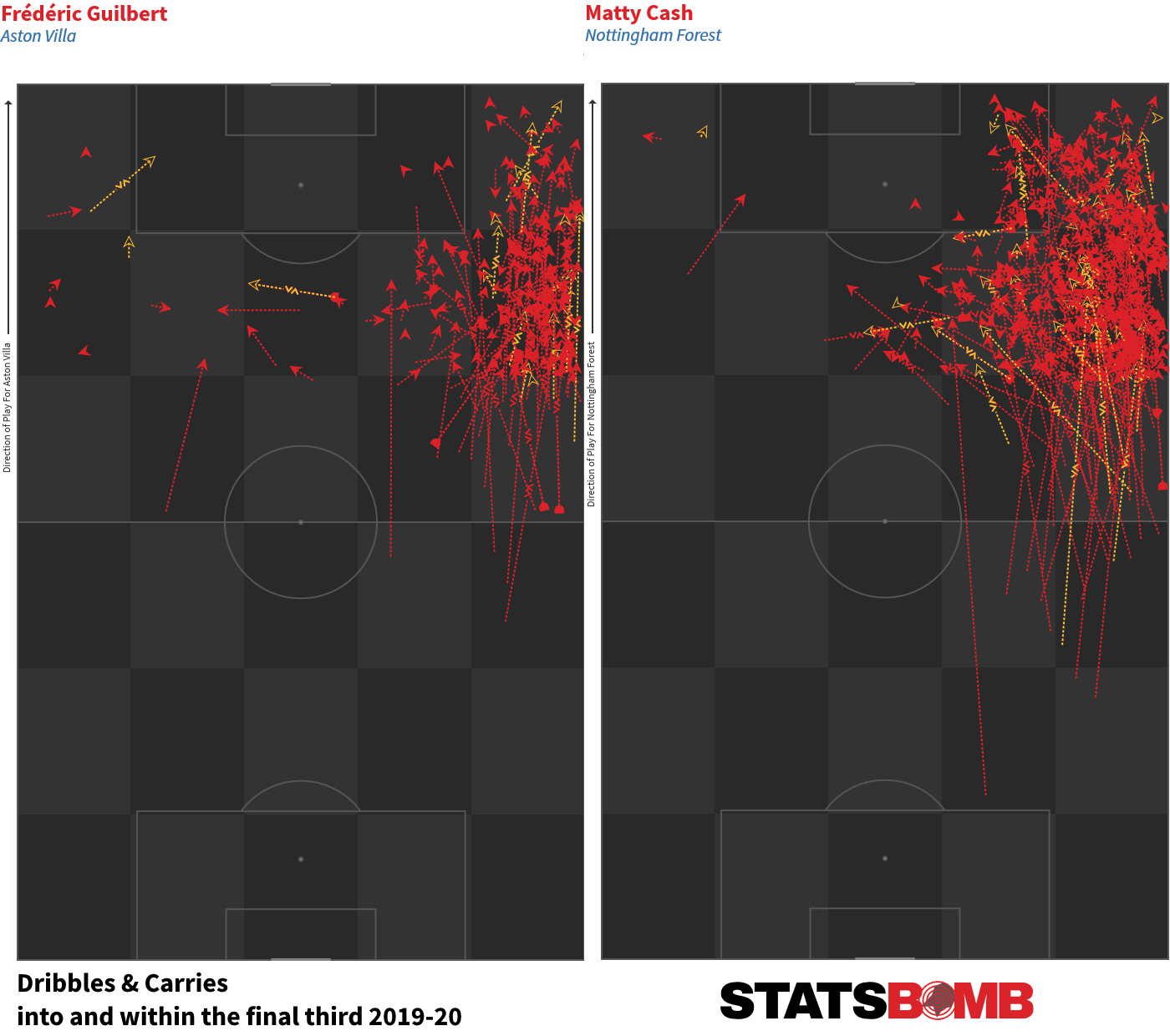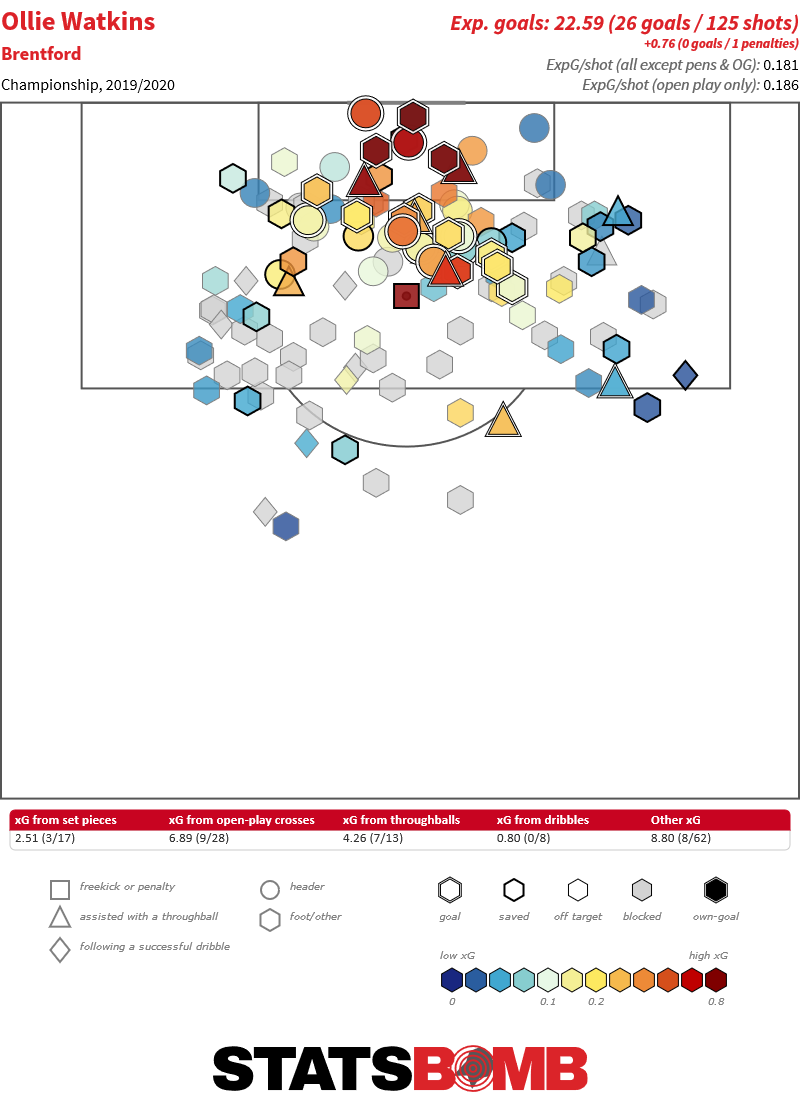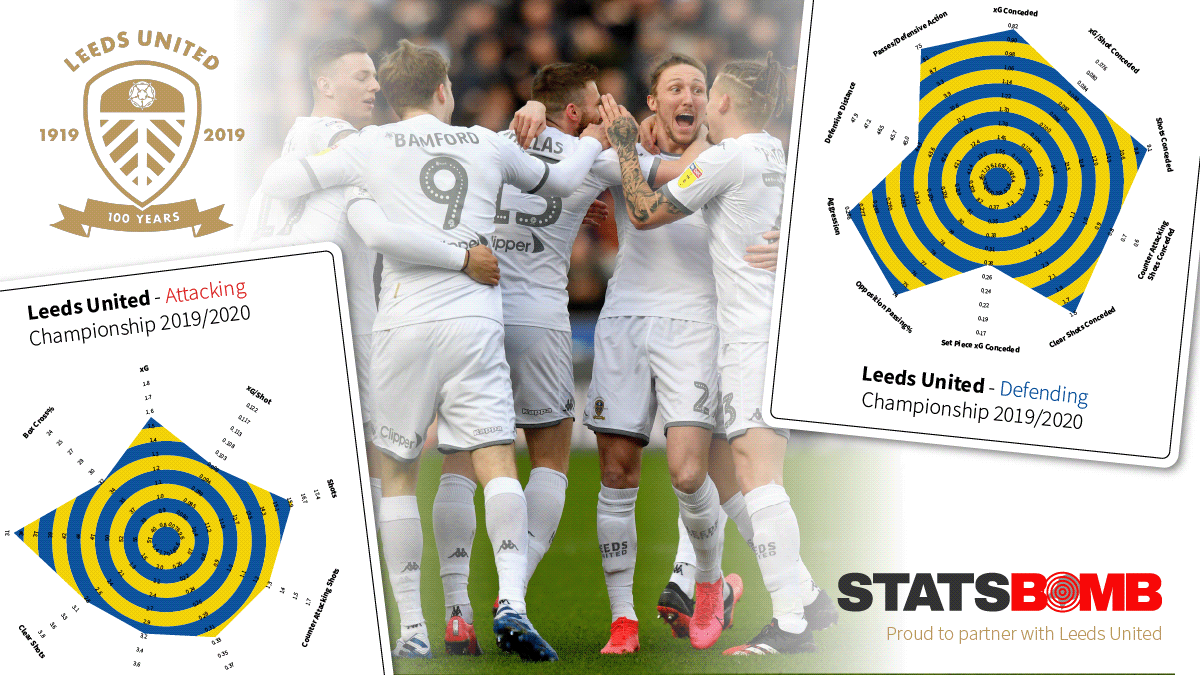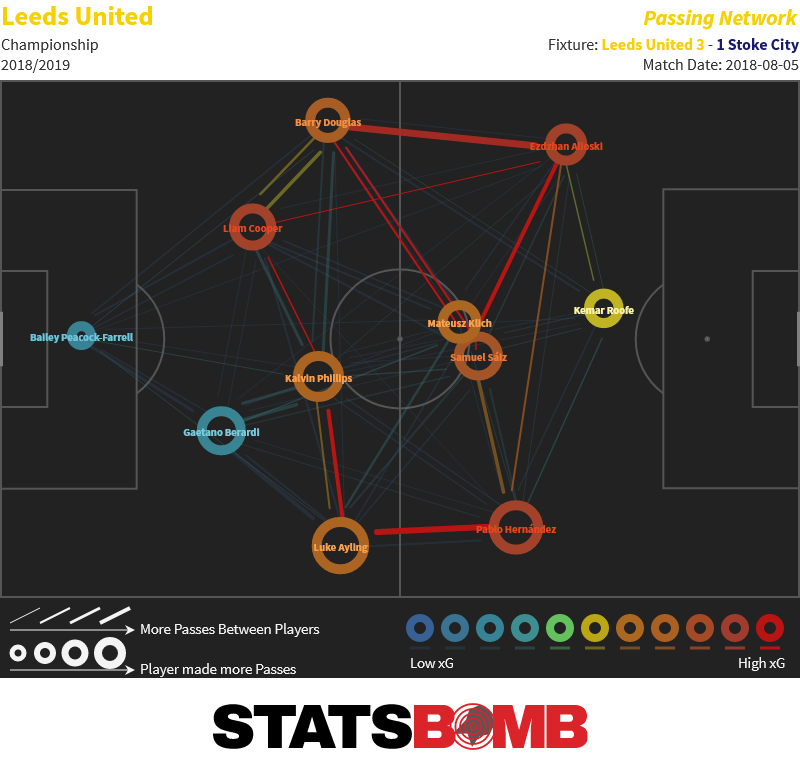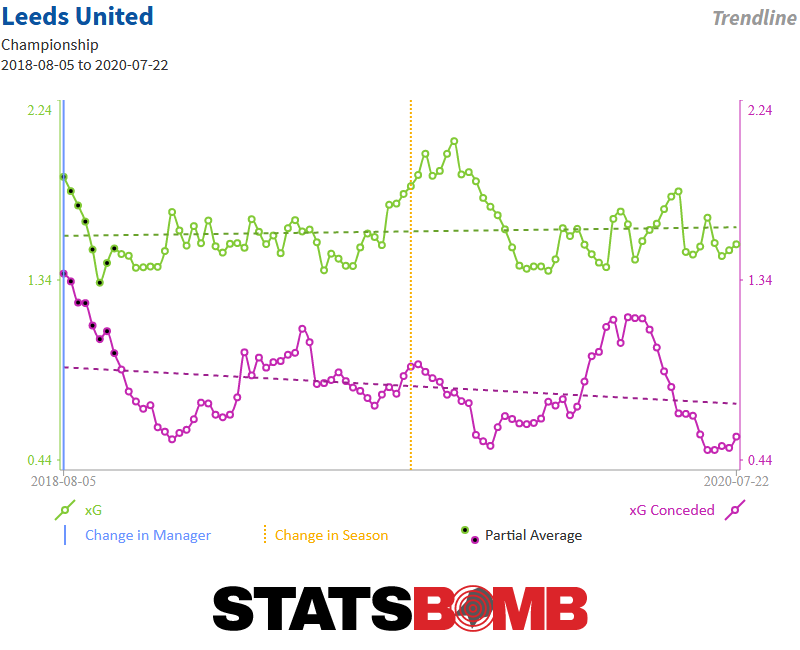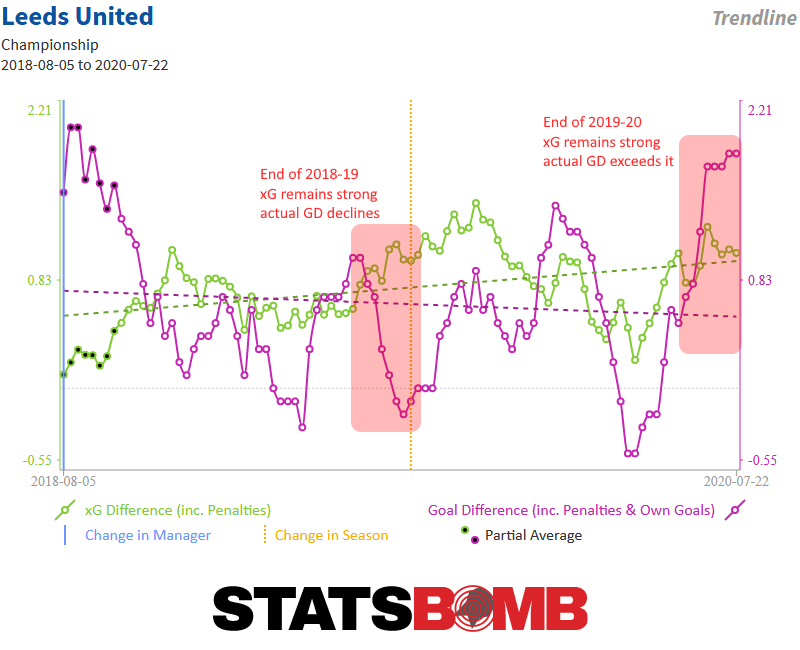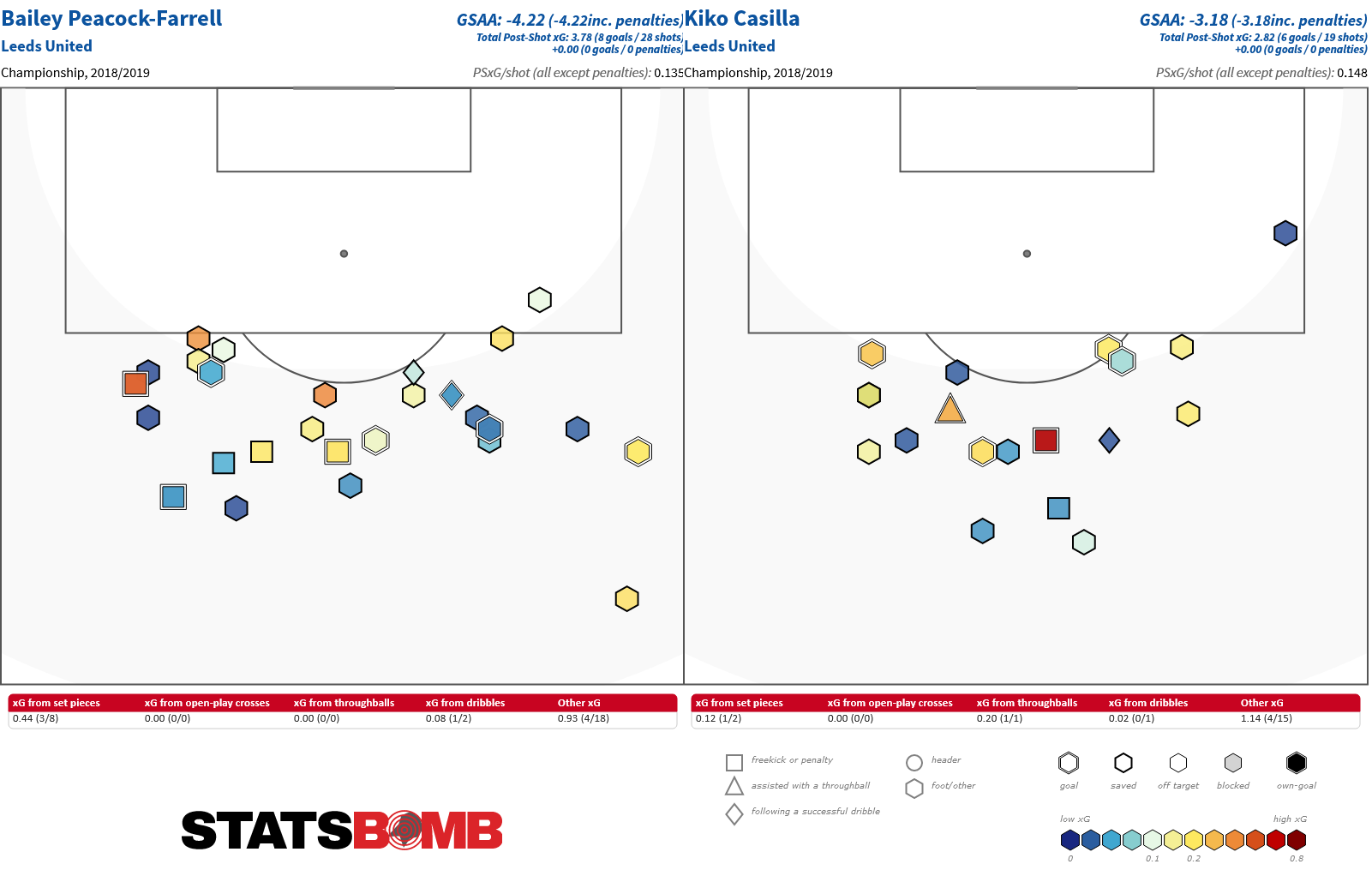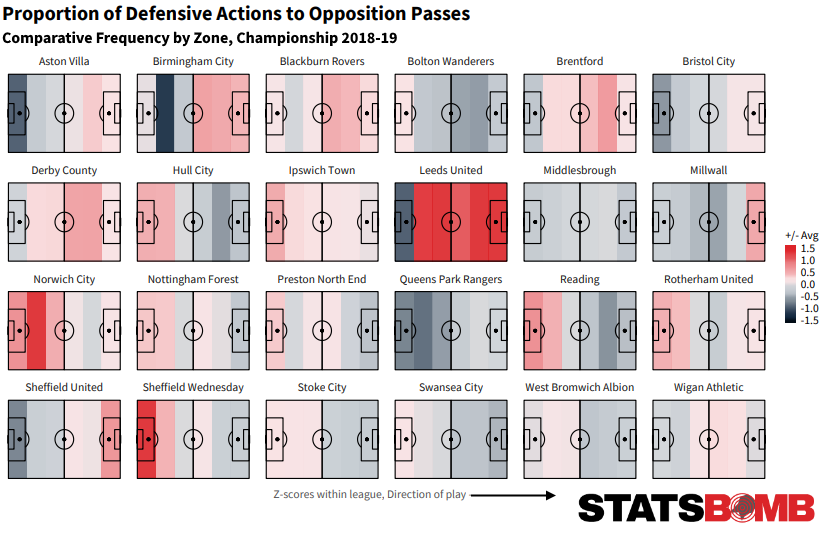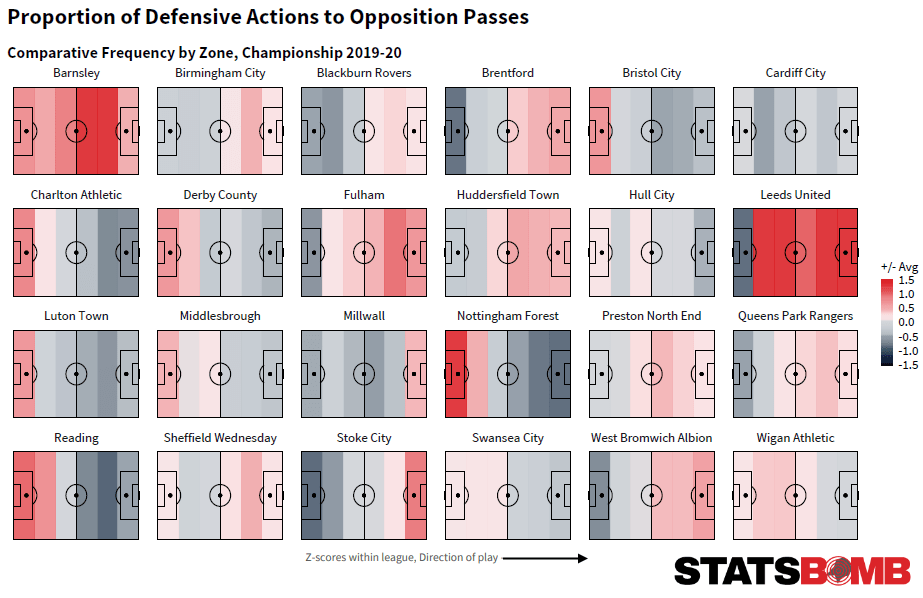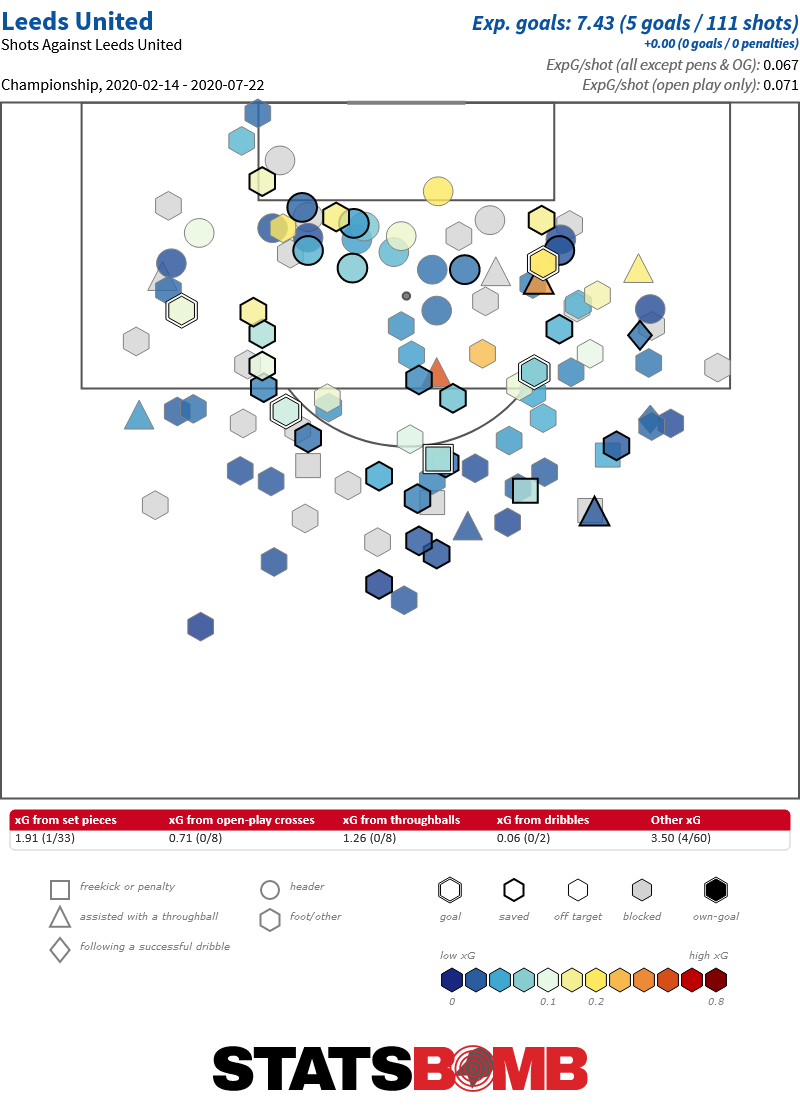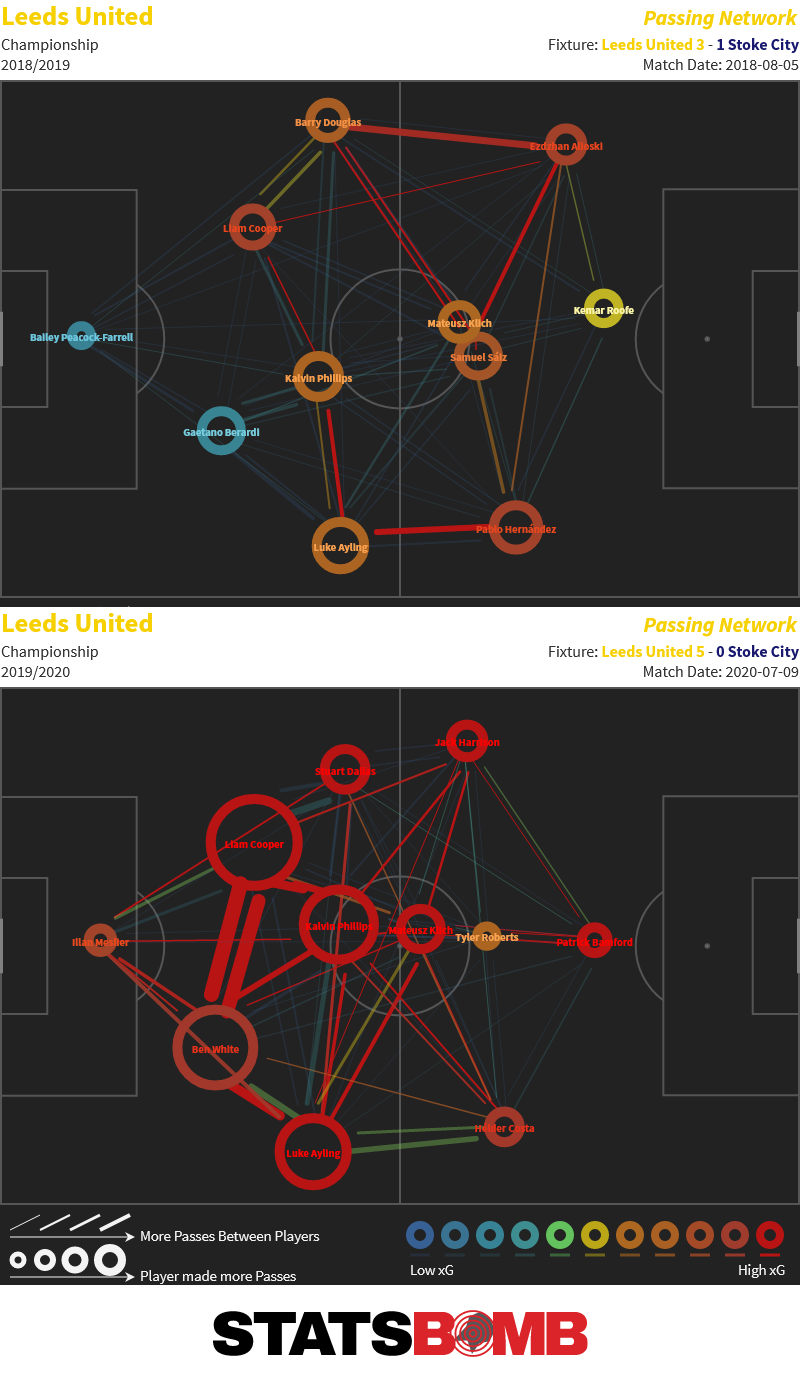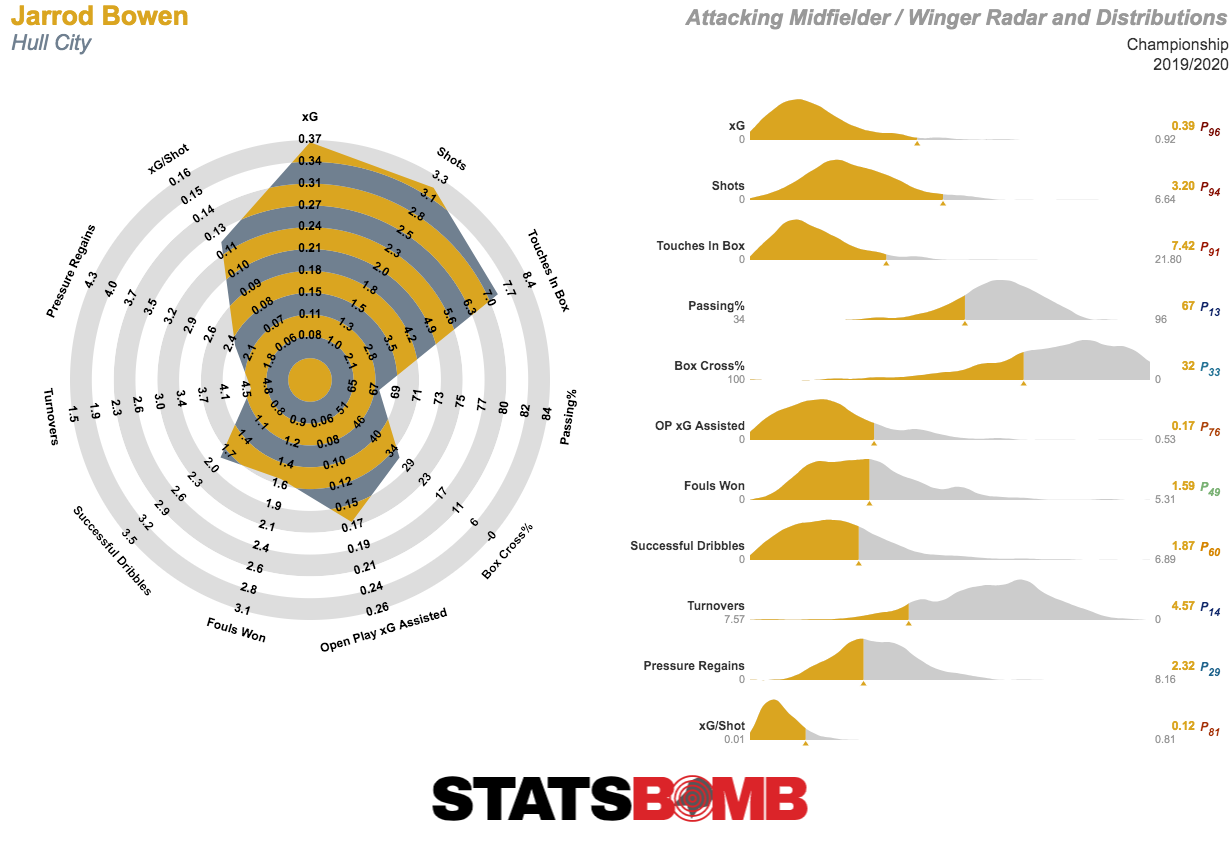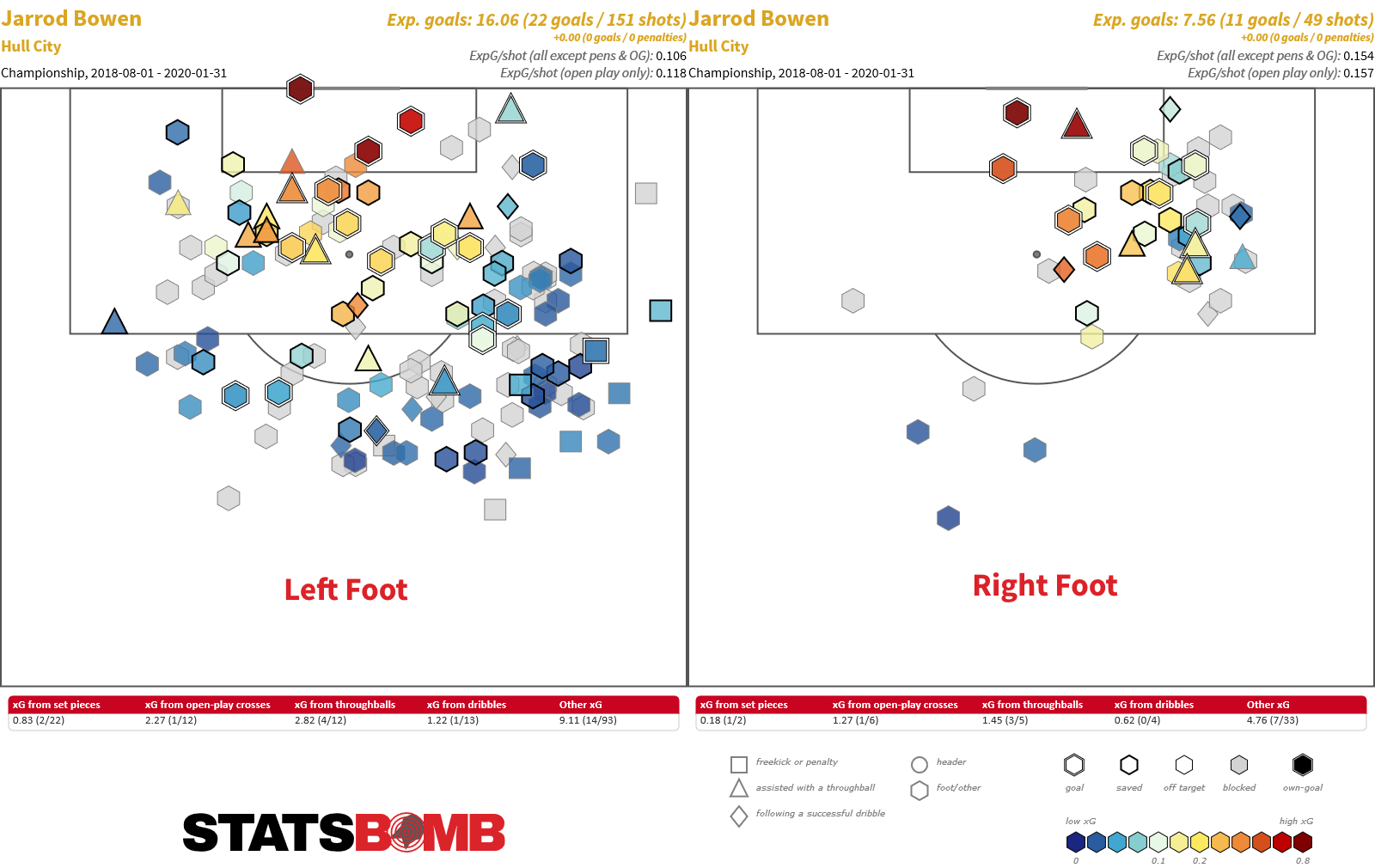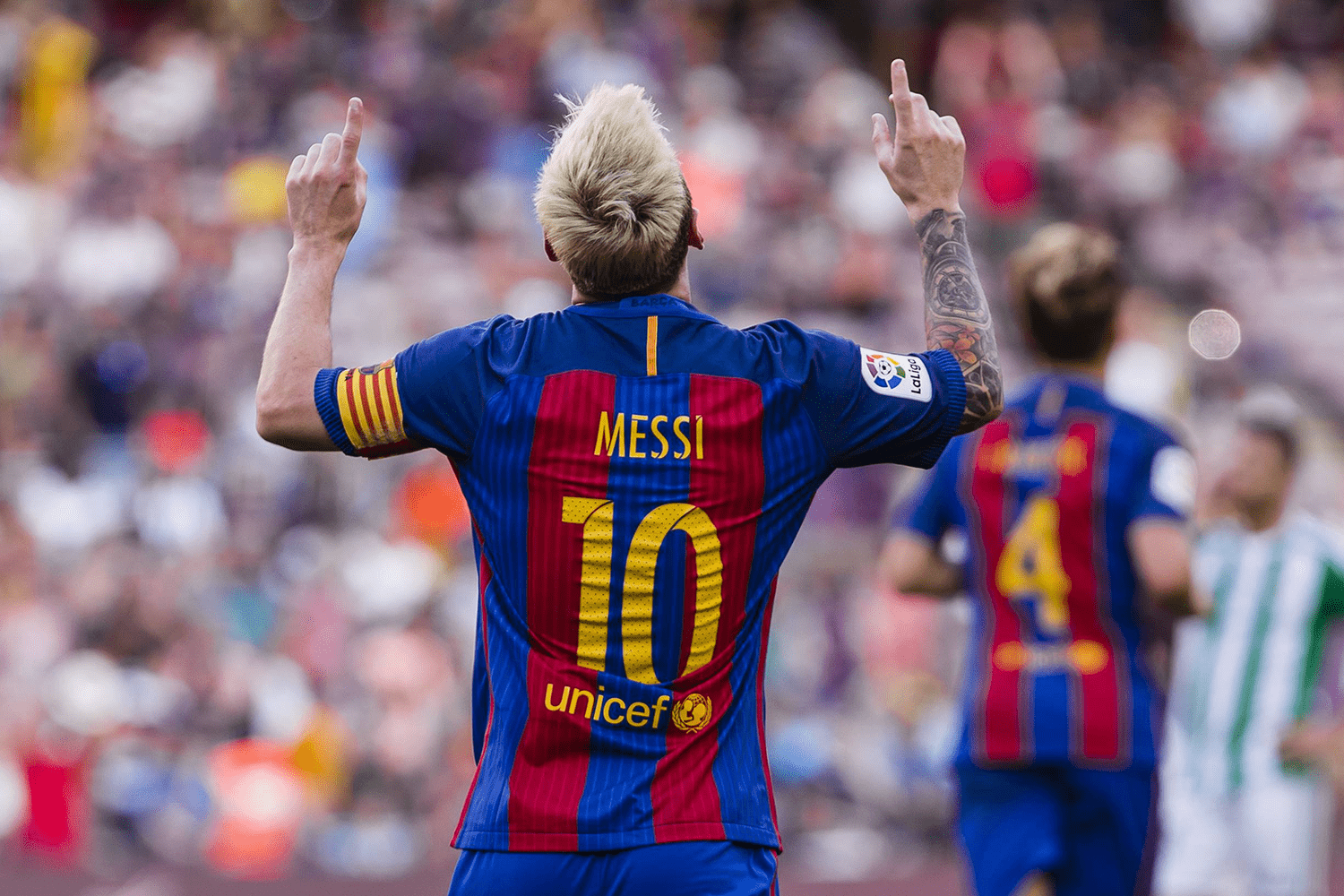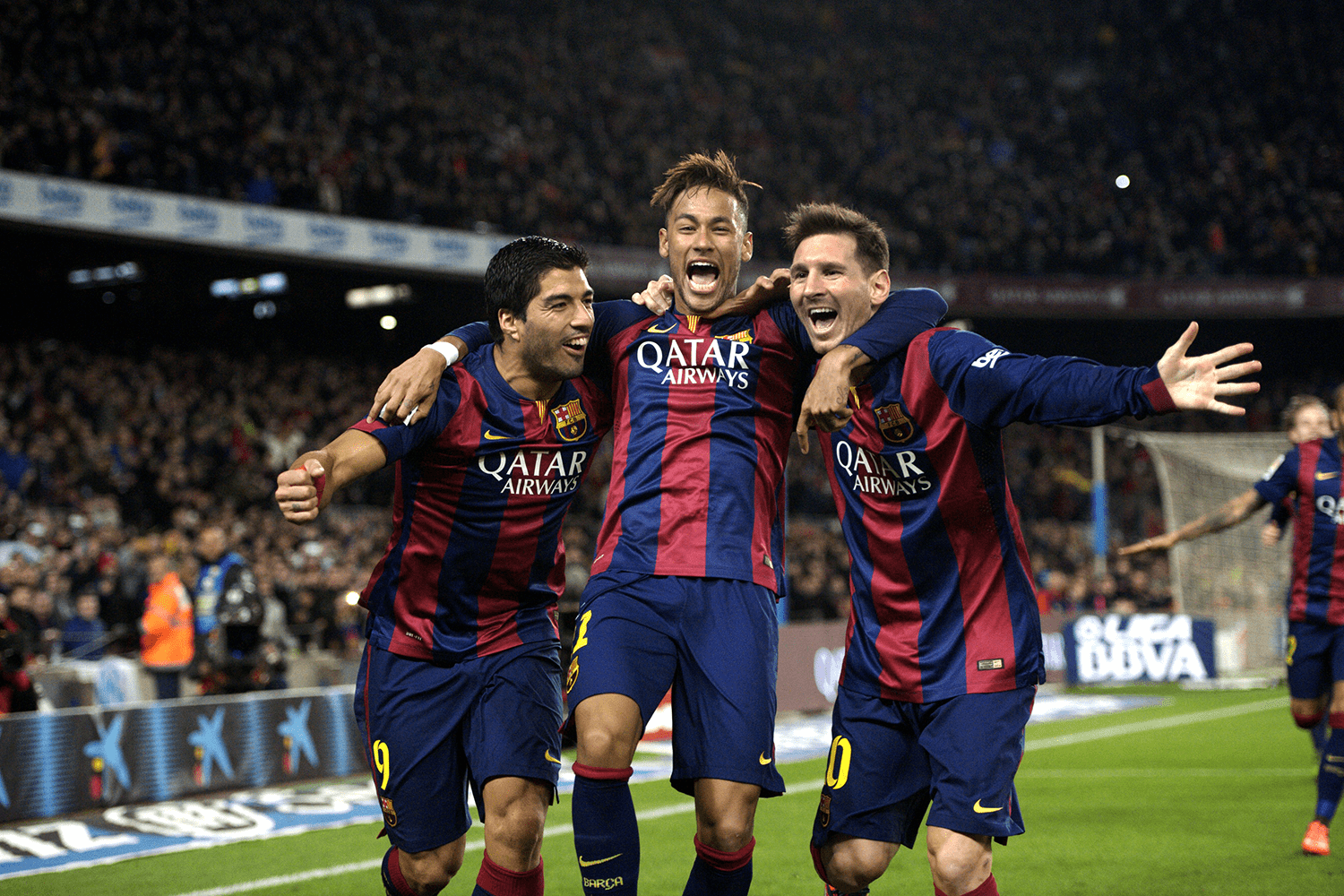First let's take a moment to salute Roy Hodgson.
From Palace youth player to retiring as Palace manager by way of a successful 45 year multi-continent managerial career, Hodgson has been a titan of the game and he will be missed, not least from the post-game interview circuit, on which he was ever good value. In truth, he leaves Palace at a good time for his legacy, as results have skewed ahead of expectation for a couple of seasons now and we can but speculate how much of a factor his veteran savvy was when placed next to landing on the right side of some statistical variance. What statistical variance would that be?
That's the expected goals for Hodgson's (nearly) four seasons in charge and here are the seasonal outcomes:

If I'm Roy Hodgson I'm pointing at the league table.
Last year I wrote that ahead of the season were Palace given the option to take 17th, they would be wise to accept. The trending in metrics season to season was bad enough that it was a valid suggestion. The team had just scored 31 goals total in a season and seen their expected numbers crater by nearly 20 goals. In reality, Palace were never really in danger of relegation--by early March they had 30+ points and were ten points clear of 18th place--while their metrics got worse, in particular further declining as they coasted in to port late on.
What was bad about 2020-21 Crystal Palace? Firstly, the defence conceded a lot of goals--66 was more than everyone bar Southampton and West Brom. Now that's a top line red flag that doesn't improve when peering beneath the surface, Vicente Guaita did have a less successful 2020-21 compared to 2019-20, but he basically kept goals out at expectation instead of buying his team an extra eight goals as he had done before. At the other end of the pitch, finally Christian Benteke scored ahead of xG (10 goals vs 8 xG) for the first time in a number of seasons and was backed up by ahead-of-xG finishing from Eberechi Eze (4 from 2) and Wilfred Zaha too (9 from 6). In attack, finally nobody bombed out. As we know, this kind of overperformance is nice to have, but impossible to rely on and technically, only Sheffield United's attack was worse.
Enter Patrick Vieira, but which one?
The Patrick Vieira that managed New York City FC initially brought a possession game to the team before transitioning towards a high energy outfit stocked with younger talents, and was relatively successful, insofar as his team competed at the top of their Conference. Upon accepting the challenge to move to Nice in 2018, it could perhaps be presumed that Vieira might pursue a similar style, but what transpired wasn't quite the same. Nice weren't unsuccessful with Vieira at the helm but at least in his first season, 2018-19, goals were super hard to come by (they scored 30, one fewer than Palace in 2019-20) and finished seventh after a raft of low scoring games. At this point the style of play was somewhat disjointed, still prioritising a passing game from the back, but not necessarily very effective with it.
Nice were a young team though and pointed upwards the following year in finishing fifth, albeit with warning signs. A season long ballooning over their non-penalty expected goal difference, which remained a steady -0.18 per game across both seasons helped but they remained a possession heavy (58% in 2018-19, 55% in 2019-20) unit with no real commitment to any kind of press and with very little functional cutting edge. His eventual dismissal in December 2020 was the result of a succession of stepped-on rakes in the form of five straight defeats in all competitions, four of which were at home, but actually coincided with metrics finally pointing upwards:
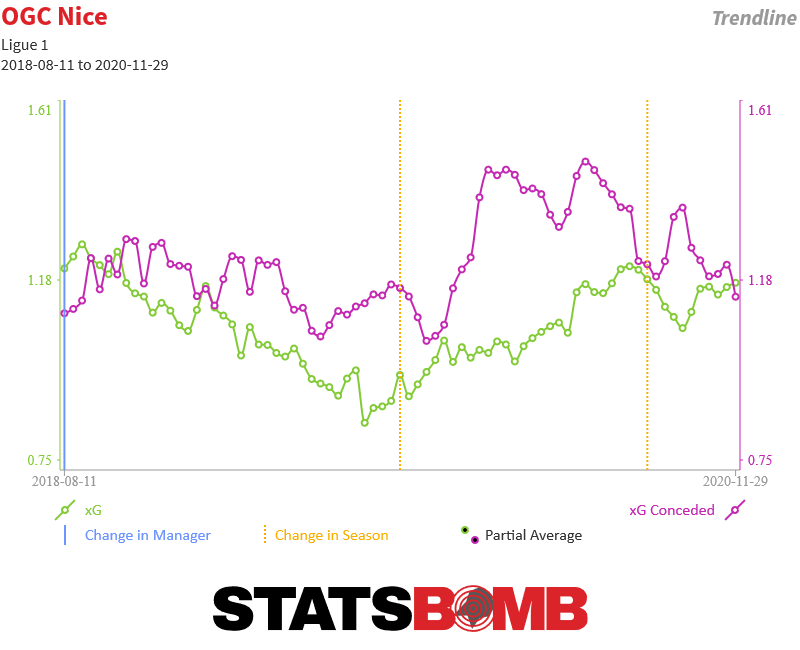
There isn't a ton to get excited about here, but sub-par metrics plus above par outcomes does speak quite loudly as to Hodgson's last two seasons, albeit via a structurally different plan. Vieira is coming in here taking over a team that has struggled recently, and it does feel a risk if he looks to deploy a possession first outlook, mainly due to the transition that will be required in this Crystal Palace team.
In recent seasons, it has escaped nobody's attention that Palace have been an aging team and their 2020 transfer window started address that with the signings of Eberechi Eze and Nathan Ferguson. Unfortunately Ferguson missed the entire season injured while a steady opening season from Eze was suffixed by an achilles injury which is thought to see him likely to miss a good portion of 2021-22. Not part of the plan, we go again!
Weirdly my preview last season included a section on Conor Gallagher which detailed how his split season across Charlton and Swansea in 2019-20 saw different aspects of his play come to the fore, and was a useful instruction to factoring in team styles into player evaluation. He then rocked up at West Brom and found similar divergence playing first for Slaven Bilić and then for Big Sam Allardyce, each of which meant that his statistical profile once more varied:
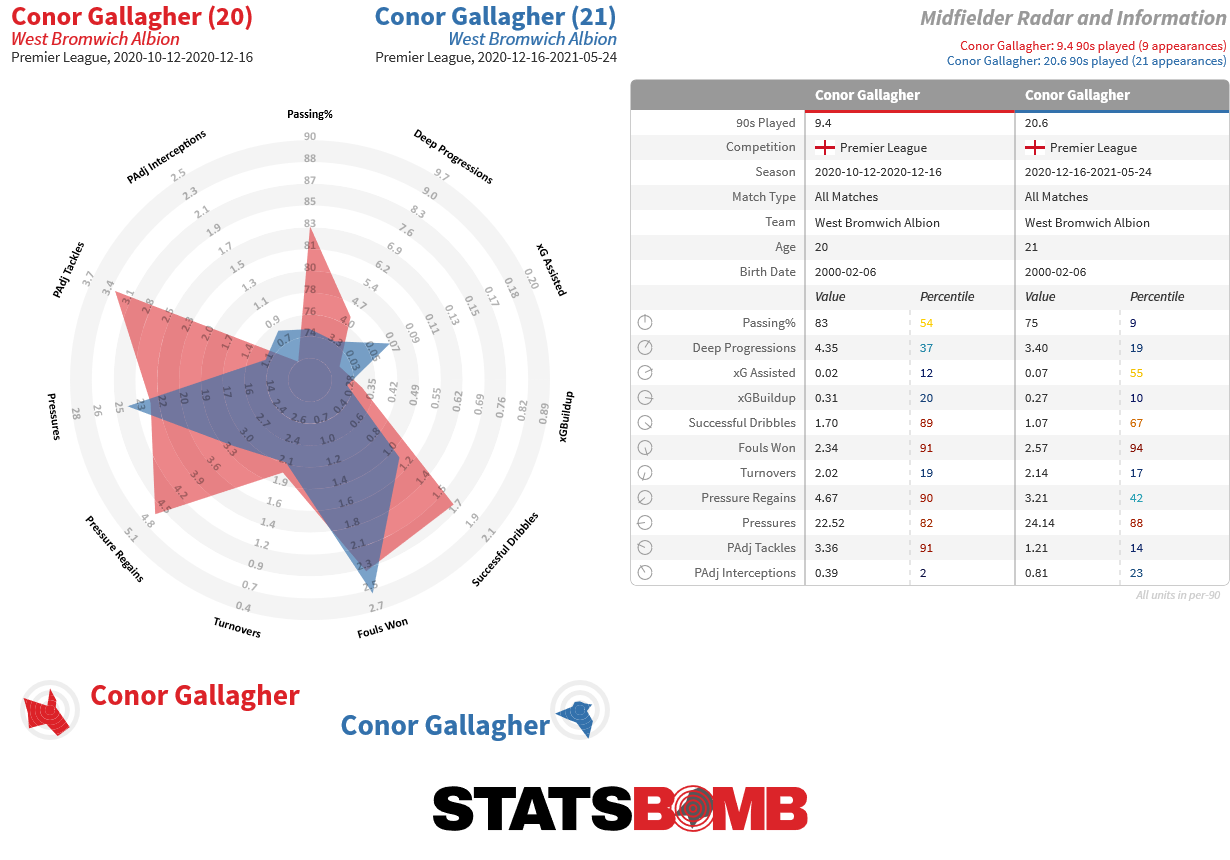
It paints a mixed picture, but is pretty positive for a young player in their first season in the league on a relegated team. The guy who logged 83% pass completion for Bilić will fit in nicely to Vieira's plans, the 75% guy who played for Allardyce perhaps less so.
Elsewhere, the proverbial chequebook has come out for some promising talent in Reading's Michael Olise and Chelsea's Marc Guéhi, who impressed on loan at Swansea last season and is likely ready for a step up in league. Both these signings look ideal, talented young players ready for the next step in their career, but the caution is in the entire squad profile. Palace's rebuild appears to have come a little late, and as such the squad skews away from the age group it likely needs to--prime.
The one signing that sits bang on the line here is that of Joachim Anderson, another player who spent 2020-21 on loan at a relegated side (this time Fulham) while performing not without credit. He was linked with Tottenham earlier in the summer and can viably be considered a coup for Palace. Guéhi and Anderson likely slot right in at left and right centre back especially give that the 1-2-3 2020-21 depth at left centre back (Gary Cahill, Scott Dann and Mamadou Sakho) have all departed and right centre back was mainly manned by Cheikhou Kouyaté, who may be a centre back now but certainly wasn't always.
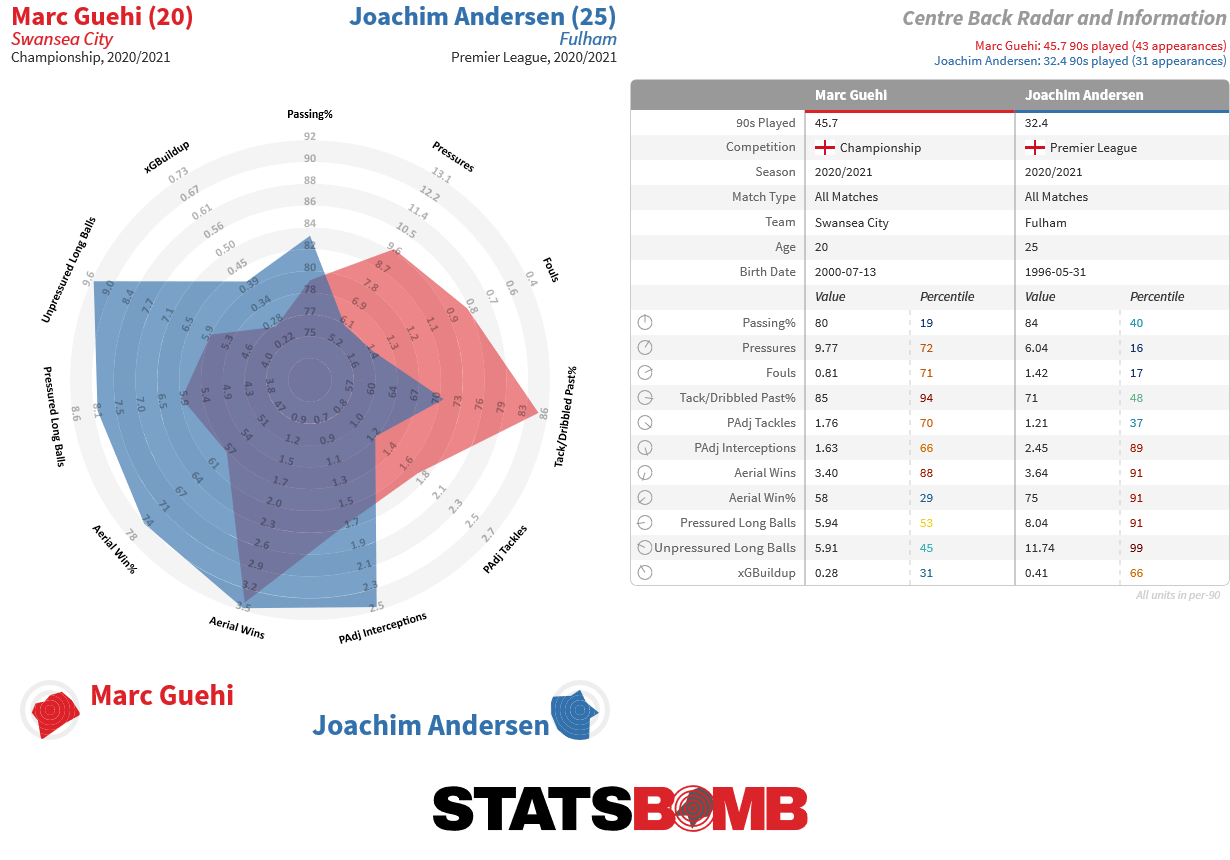
A slew of contracts ended for Palace in the summer of 2021 and in particular, departures from long term veterans and regular performers such as Andros Townsend and Patrick van Aanholt mean the squad currently looks light overall, with a particular deficiency in midfield. Of course the transfer window is open a while yet so remedial action may be taken, but it appears likely that Palace will start the season without a strong bench. It's possible that Palace are waiting for the music to stop elsewhere and planning to offer regular playing time to some of the top clubs less wanted stars, and that's certainly a strategy that may bear fruit.
Projection
Squad turnover and thinness, a lack of prime age players, a new manager likely to change the style of play and long term sub-par metrics all point at risk factors ahead of 2021-22. Palace have rightly been praised for some of their moves in this window for addressing their long term future, but they still need to stay in this league in the present to benefit from those moves and that may prove tough. Last season's projection was thus:
The trending is wrong and it will take distinct and real change to the team's metrics to give them a chance of steering clear of a relegation battle. Hodgson has been in the game long enough to see the warning signs and in most Premier League seasons there are double the amount of teams that perform at a level to put themselves into the relegation mix, so he may like the chances of winning a coin flip. But planning and execution of strategy are what limit risks such as this, and having been reactive rather than proactive in turning over their squad it could well be tough for the club. Offered seventeenth today, you'd have to take it.
In truth very similar remarks apply now. The bookmakers have Palace, Brentford, Norwich, Watford, Burnley and Newcastle in the mix for sub-40 points at this juncture, meaning once more a likely six teams for three relegation spots, the same either/or dynamic as last season. This end of the table is a new challenge for Vieira and he will need all his man management skills to get the best from this squad, week in, week out and keep them competitive. Offered seventeenth today, they should take it.
Want to read about another team? The rest of our Premier League season previews can be found here
If you're a club, media or gambling entity and want to know more about what StatsBomb can do for you, please contact us at Sales@StatsBomb.com
We also provide education in this area, so if this taste of football analytics sparked interest, check out our Introduction to Football Analytics course
Follow us on Twitter in English and Spanish and also on LinkedIn
